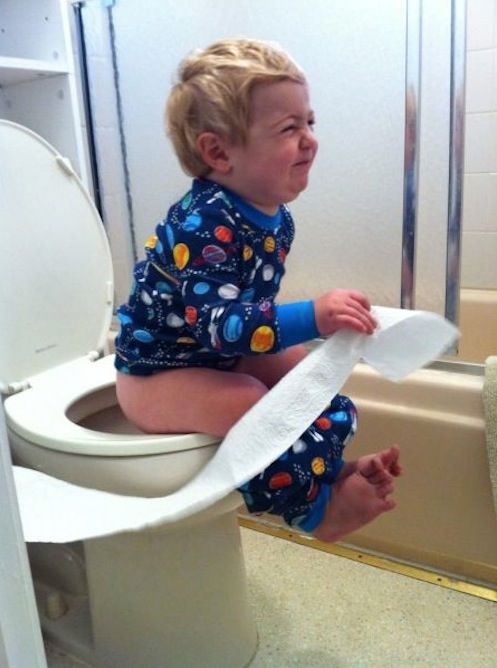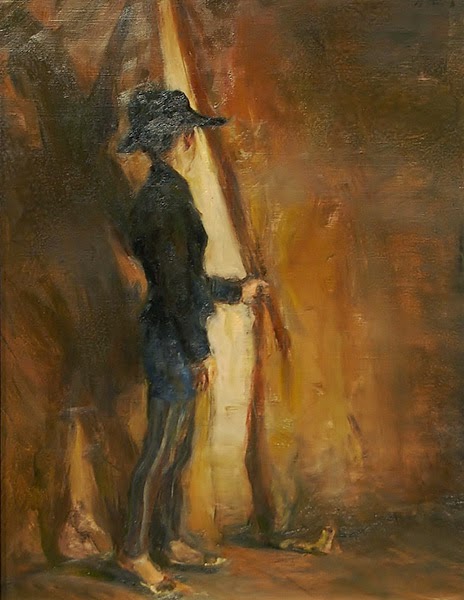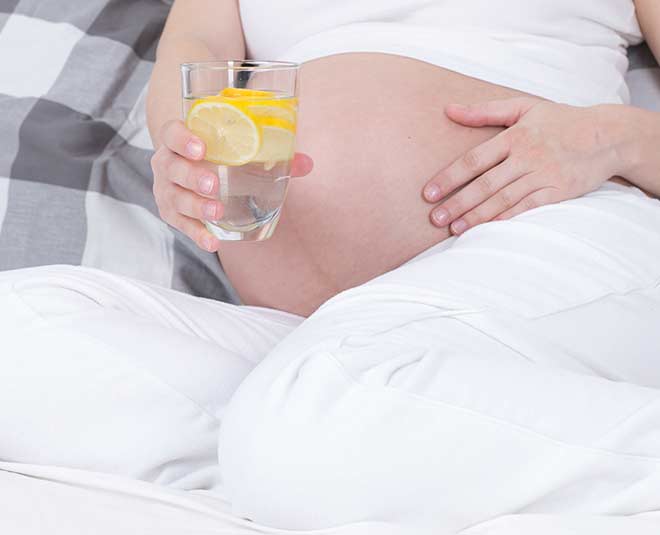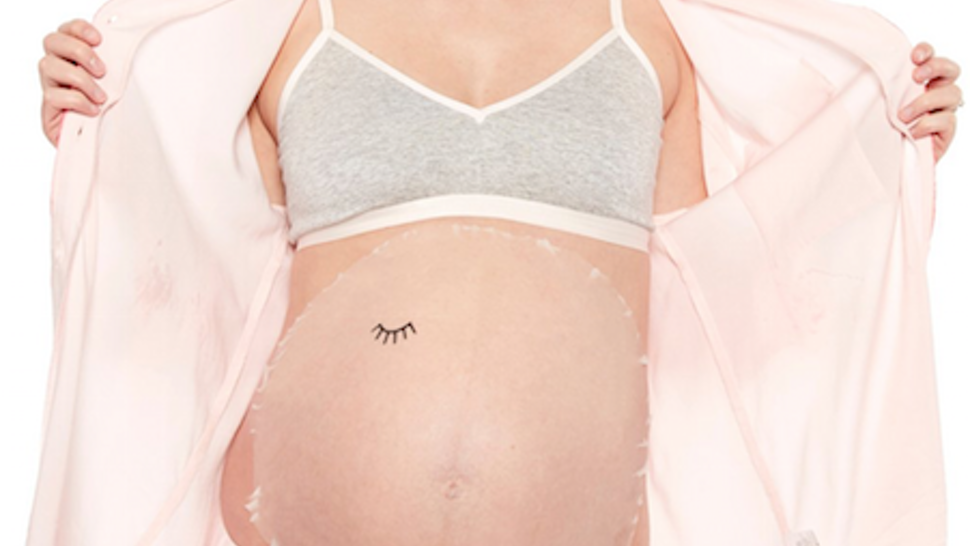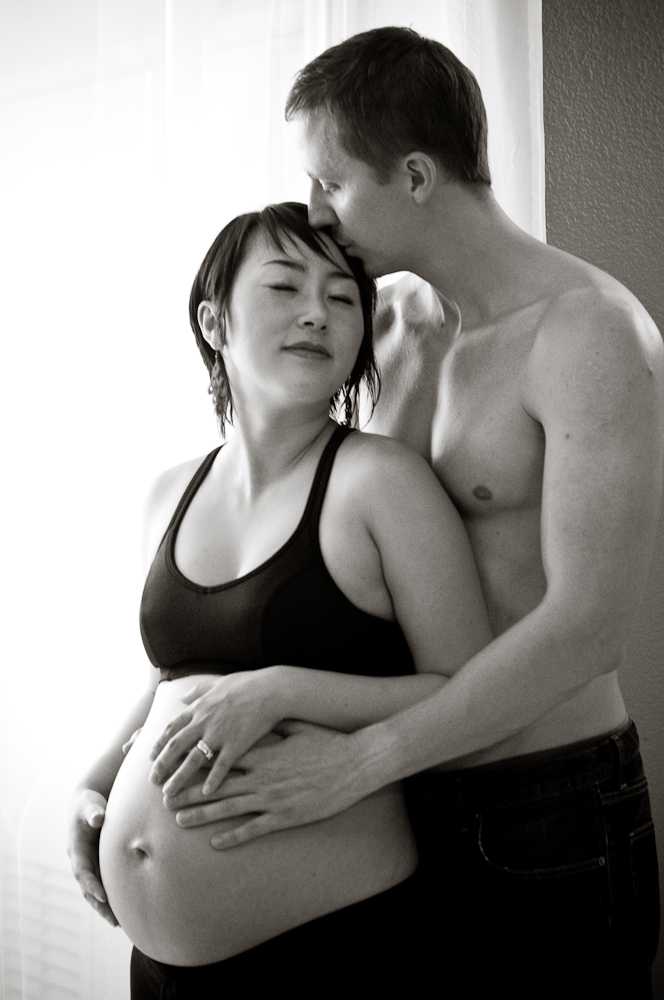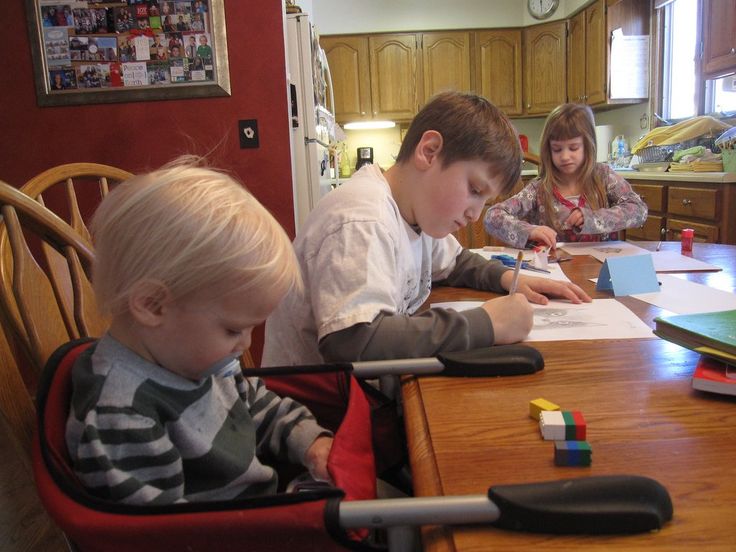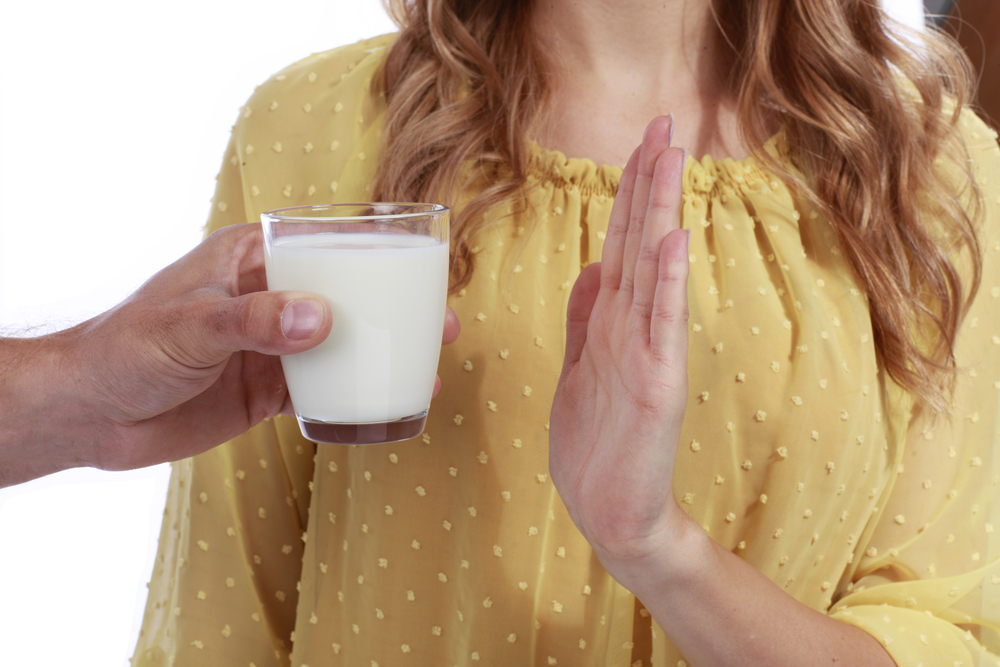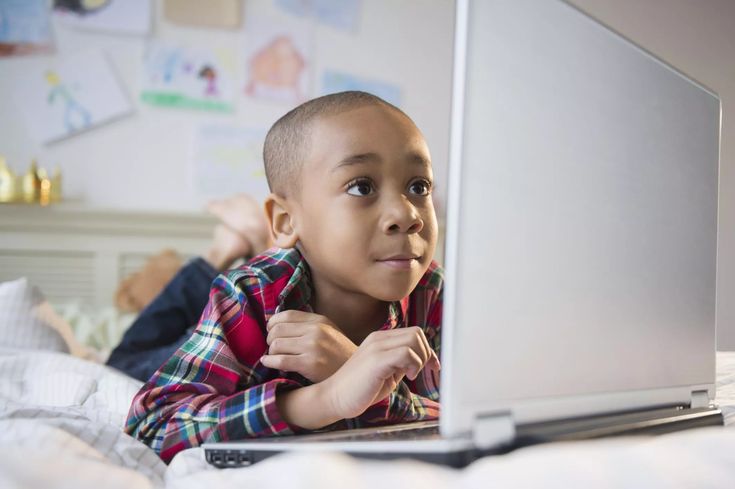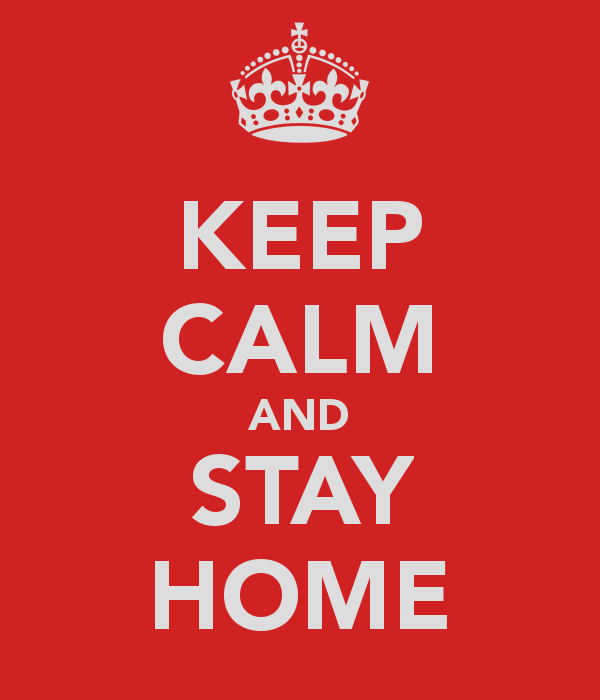How to potty train your child in 1 day
How We Potty Trained Our Child in One Day
Potty training is such an awesome milestone and a huge accomplishment for your child. And for you as a parent! When I potty trained my son, I spent hours reading books and researching online endlessly. Then I took all the information I learned and came up with a method that worked amazingly well – our son was potty trained in ONE DAY.
A BIG thank you to the moms who shared their tips and experience to help me come up with the below method in addition to what I learned from Lora Jensen’s 3 Day Potty Training book.
What to Expect:
- Quicker and Easier: I expected potty training to be harder than it was and to take much longer. But with this said, I was 100% all-in. It was only about poop, pee, and potty for one day straight. The results are much better when you are committed to potty training and focus solely on this.
- Accidents: Yes, there will be accidents – a lot of them .
. . especially on the first day.
- To be Proud: Expect to be so proud of your little one when they tinkle in the potty, even that first little drop. If any pee reaches the potty, it’s such an exciting feeling. When your toddler starts to ask for the potty, it fills you with such happiness and pride; your baby is growing up and accomplishing a major milestone.
My Day One Results:
Here’s what I posted on Facebook to report my day one results:
Potty Training results!! I’m simply amazed. Yesterday was day one of potty training. By the afternoon until bed, not one accident! Vasya told me every time he had to go, and we zipped him onto the potty, and he went. Three poos yesterday and 8 pees on the potty. This morning another pee on the potty, and when I was taking this photo of the potty seat, Vasya climbed up by himself and went #2. Sorry for all the potty talk, but I’m so excited!!
So how did I do it?
1. Wait until your child is ready.
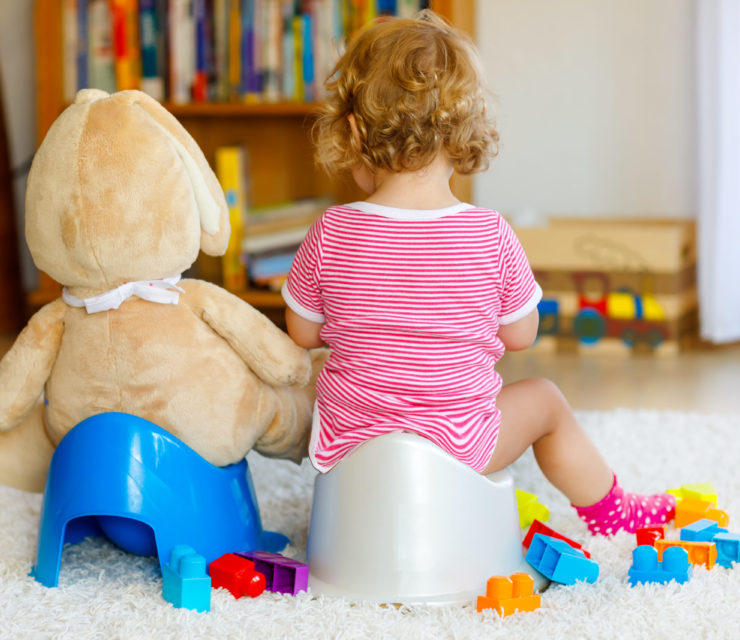
Our son was 2 years and 4 months old when we potty trained in one day. We had just been traveling to visit my in-laws over the summer, which involved a nine-hour plane ride, so we decided to stay in diapers for the trip.
Over the summer, we noticed some signs he was ready to be potty trained:
- He said a word for pee, “teta,” and “kaka” for poo.
- Our son started to tell me every time he peed or pooed in his diaper.
- He had a good understanding of two and three-step instructions. “Vasya, see that red block? Please go get it and place it on your tower.”
- Our son didn’t talk yet . . . only some words but enough to communicate.
2. Talk about potty training.
For a few weeks, before we started potty training, I said, “Soon, mama will teach you to go potty on the toilet like mama and papa. No more diapers!”
3. Order underwear 1-2 weeks before.
My ALL-TIME favorite organic potty training pants are from ZOOCCHINI.
I love this underwear because:
- Fun Bright colors and beyond adorable designs – your toddler’s bum will never look SO CUTE!
- Elevated embroideries and extra layers of double-sided terry for SUPER ABSORBENCY – make those oops moments better, especially early in the potty training stage when you venture out of the house for the first time!
- Organic cotton
I have nine pairs of ZOOCCHINI organic potty training pants for toddlers, but we also got some underwear at Target so Vasya could choose his potty training pants from the store the day before and be more part of the process of becoming a big boy.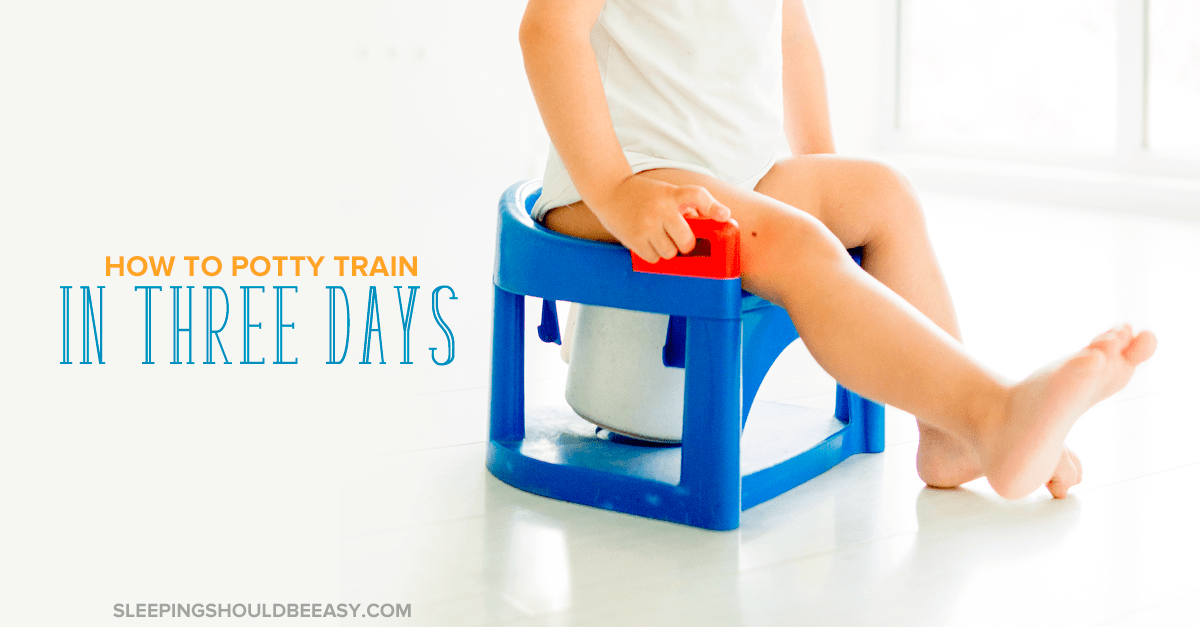
4. Choose a potty.
I love this potty seat with the ladder that goes right on the big toilet! Super easy to put together, sturdy, cute, and foldable. Easy to clean too. I did not like the idea of a portable, little potty – no way to flush the mess! So we used the regular potty with this special seat with a ladder. I love the handles on the sides too. My son can independently climb up by himself.
5. Set aside three days.
Set aside three days in a row where you will focus on the potty, pee, and poop ONLY. Especially on day one, you need to plan to be with your child all day playing, reading, etc. Be close to the potty! And don’t leave the house with your little one just yet.
6. Go commando.
I researched online and read the recommendation to put my child in an oversized t-shirt and no underwear. I thought no way! So I started potty training with underwear, and he peed in them A LOT. Underwear feels like a diaper, so it was SO MUCH better when I removed the underwear.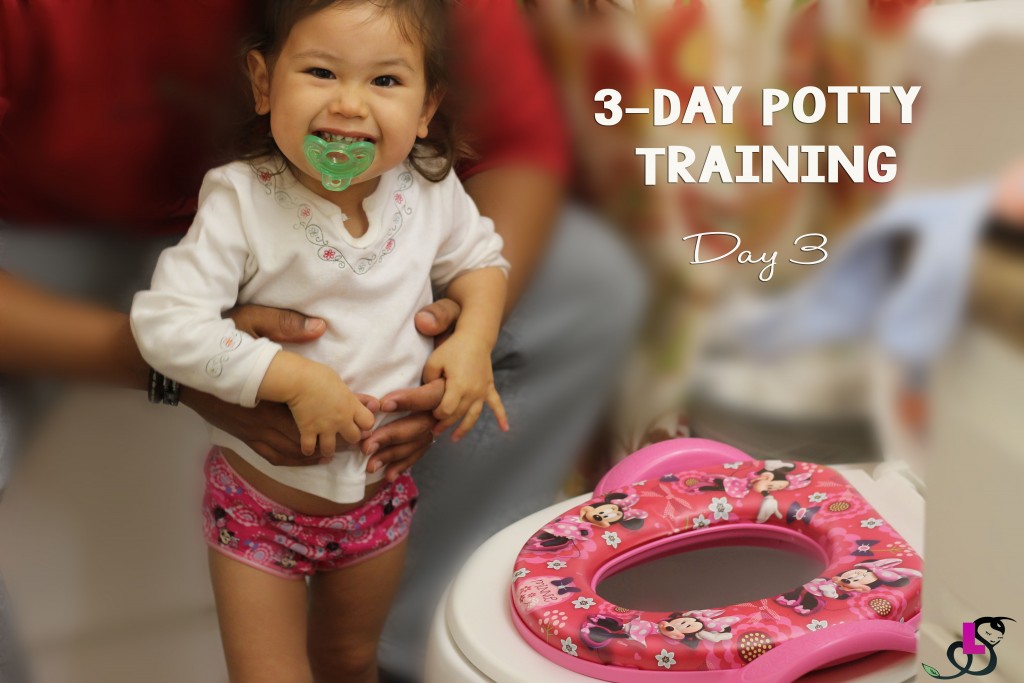
We started using underwear on day three.
7. Wave “bye-bye: to diapers.
On the morning of day one, when your toddler wakes up, take the diaper off right away and have your child throw it away, and say “bye-bye diapers. I’m a big boy now!”
8. Say this phrase CONSTANTLY.
“If you have to go pee or poop in the potty, let mama know. Okay?” Seriously, say this every two to five minutes. You see, toddlers will forget about the potty. They will pee wherever they are, just like they are used to with a diaper on. But if you constantly remind them, they remember to tell you they need to go.
Never ask, “Do you have to go to the potty?” Your child will say no, even if they have to. By saying, “Let me know if you need to go poop or pee in the potty,” it gives the child the decision to let you know.
9. Accidents happen.
Accidents will happen. A LOT. When they do happen, it’s imperative to remain calm, but you can express disappointment. No yelling.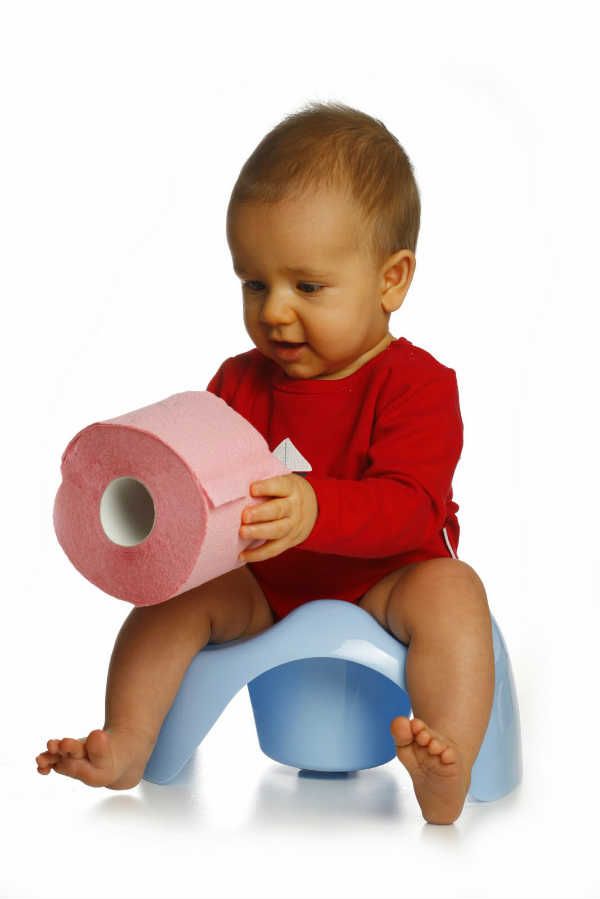 When there’s an accident, it’s essential to say, “You had an accident. Pee and poop go in the potty. Let’s clean up.” Say this with some disappointment in your voice, but never yelling.
When there’s an accident, it’s essential to say, “You had an accident. Pee and poop go in the potty. Let’s clean up.” Say this with some disappointment in your voice, but never yelling.
If you catch your child peeing or pooping, run to the potty. Even if just one drop gets in the potty, celebrate BIG!
Be mindful of where your toddler is sitting – you may want to cover your furniture with plastic bags and towels.
10. Celebrate big, but no bribes.
Giving a reward like candy or a sticker is common when your child goes on the potty, but this can backfire. My friend gave her daughter an M&M every time she went on the potty, which worked for them. But it was pretty funny when their little girl started to pretend to go potty to get an M&M – how cute is this?!
So it’s best not to give any reward every time they go. Eventually, there is no more excitement around the reward, or they will want just the reward without going on the potty.
For us, we praised Vasya A LOT when he went in the potty, and we had a celebration dance. First, we created HUGE excitement. “You did it! You went pee/poop in the potty! I’m so proud of you. You’re a big boy now! Wow, you did it! Good job.” Then we would take out our special potty toy and dance. We used this awesome multi-sense trumpet toy.
First, we created HUGE excitement. “You did it! You went pee/poop in the potty! I’m so proud of you. You’re a big boy now! Wow, you did it! Good job.” Then we would take out our special potty toy and dance. We used this awesome multi-sense trumpet toy.
After our little trumpet music session and dance, the special potty toy is put away for the next potty party, but the excitement and celebration didn’t stop there . . .
Next, we would call Grammie and Papa to share the news. Make it a huge deal. This is enough to motivate kids to go in the potty.
11. The timer is your best friend.
Set the timer every 10 minutes for the first two hours of day one. When it goes off, it’s time to sit on the potty.
Sit for a few minutes.
For the rest of the day, we set the timer for every 20 minutes and went on the potty.
By the afternoon of day one, he was telling me every time he needed to go potty, but we still did the timer.
On day two, we did not use the timer.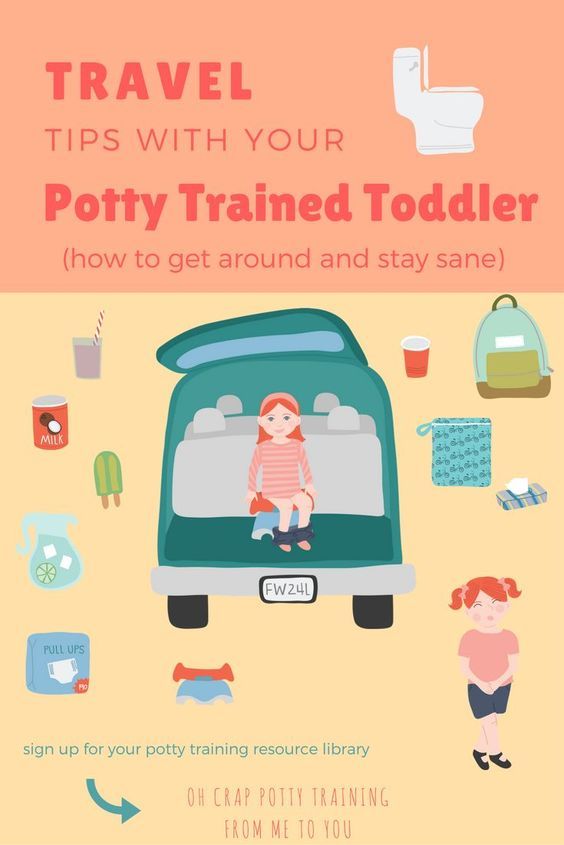 But depending on how well your child does, you may want to use the timer for the first three days. On days two and three, we continued to remind him every 20 minutes, “If you have to pee or poop on the potty, let mama know.”
But depending on how well your child does, you may want to use the timer for the first three days. On days two and three, we continued to remind him every 20 minutes, “If you have to pee or poop on the potty, let mama know.”
If your child is still having accidents on days two and three, use the timer.
12. Venture outside of the house.
Be prepared to keep your child home while potty training. And if you are doing the training, you stay home too.
When your child asks to go potty for a whole day, or two, it’s time to venture outside the house. We walked to the park the first time, and my son had an accident. We changed his clothes and said, “You had an accident. Pee and poop go in the potty. When we are not home, there’s not always a potty, so you have to hold it until we find a potty, okay?”
The next time we went to the grocery store, and no accidents! I used our potty training pants for the stores or longer trips because they are way more absorbent than any other underwear, especially those you find at the big stores.
13. Handle sleep time differently.
Use a diaper for naps and night sleep, and when your child has 7 straight nights with a dry diaper, it’s time to use underwear for sleep time too!
Is the above not working? Every child is different, and not all will be potty trained in one day. Know that your child will eventually be potty trained. If you try this method for a week and there are still many accidents, it may be a sign you’re potty training too early. Wait a month and try again 🙂
This article contains affiliate links. These opinions are our own. However, if you buy something, we may earn a small commission, which helps us keep our content free to our readers. Check out our Chick Picks Shop to see more of our recommended products. It’s our carefully curated shop of products we love and recommend! ❤️
Potty Train Your Toddler in ONE Day
If you’re new here and are wondering if the title of this post is legit and if you really can POTTY TRAIN IN ONE SINGLE DAY, let me assure you that this method REALLY does work! I’ve trained all five of my children using this method and there is no chance I would ever do anything different.
However, if you’re just now finding this blog and this method of Potty Training in ONE single day is something you are interested in learning, please begin first by reading my Part 1 AND my Part 2. What you’re reading now is the third post for very specific reasons and if you miss Part 1 and Part 2 you’ll miss crucial information for you to move forward with this style of training. Part 1 will give a better framework for why this method works like magic, Part 2 will help you with exactly what to buy and how to prepare. This Part 3 is the actual steps for the day of. The mindset going in, the time leading up to training day, and the actual training day itself all work together. All of the steps are very important so don’t miss out by only reading this post!
If you’ve been through both prior posts and are ready to get started then you’ve come to the right place!
Greet your child and excitedly remind them that their day has finally come!
Leave your child’s diaper on and let them eat breakfast in a relaxed environment with you.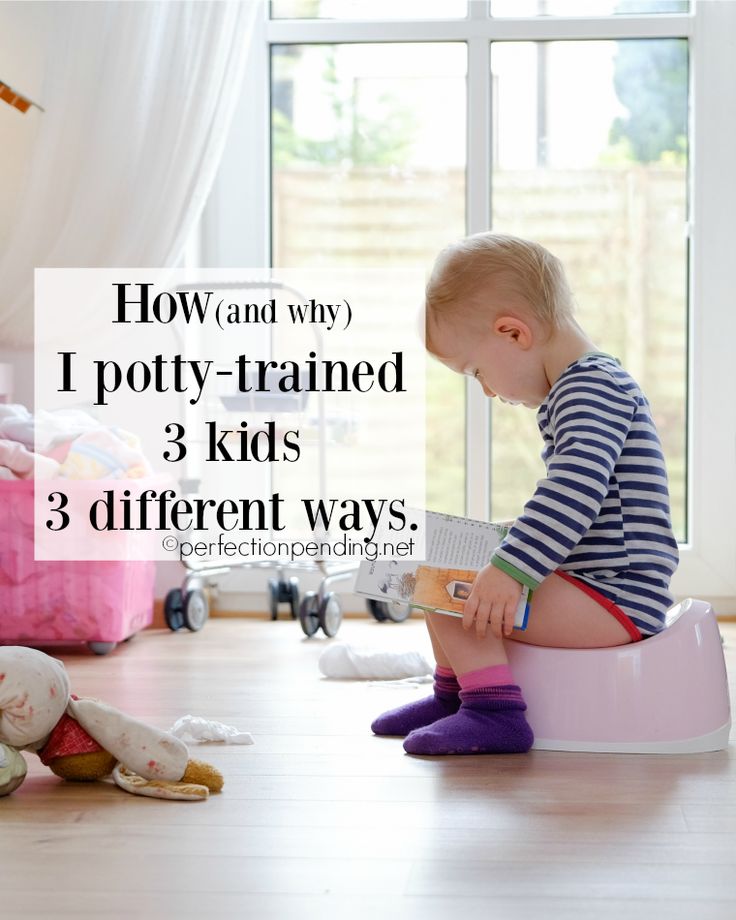
Watch Daniel Tiger on Netflix. It’s an episode called Prince Wednesday Goes to the Potty / Daniel Goes to the Potty.
It’s such a cute little show and it walks through all of the steps. It also has the cutest little song (“If you have to go potty STOP and go right away! Wash and flush and be on your way!”) and we sing it together ALL throughout potty training day. Obviously, if you don’t have Netflix, don’t worry about this step. This is just a fun way to get the steps into their minds as well as give them a little song to sing to keep the mood light and fun. So, if you DO have it, watch it together!
Read one of your potty stories. Talk together about what the day will be like and begin to introduce all of the steps your child will soon learn.
Step 2:After the show and after you’ve read your story, show child the new items (the doll, the potty, the stool, etc.). Show and explain what each one is for.
Let him/her pick a new beverage of choice and start to drink.
Let child name new doll. Refer to the doll with their chosen name for the remainder of the day. Let’s say “Jack” for now.
Step 3:Teach Jack to use the potty. Go through each of the steps for the child. Let your child hold the doll and make the doll do the commands you are giving. “First Jack needs to walk over to the potty. Then Jack needs to pull down his underwear. Next Jack needs to sit down on the potty….” and so on….
Round one: Go through all of the steps: walk to the potty, pull down pants, sit on potty (boys push penis down with small wad of toilet paper—trust me, this works like a charm— and girls close legs), pee/poo in potty (use the bottle to make water come out of doll), get toilet paper, wipe, stand up, pull pants up, take the insert and go wash it out at the normal potty, return it to the kitchen potty, wash hands…finished.
After child teaches Jack, tell your child that Jack did so well he deserves a treat.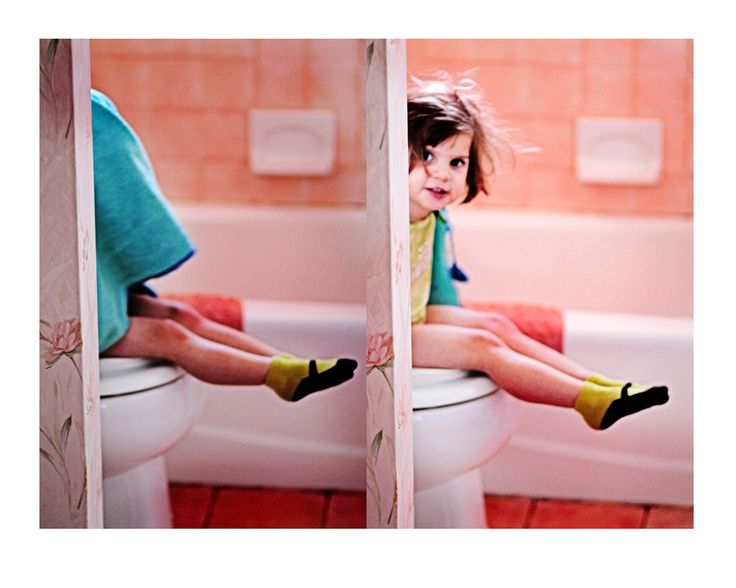 Have your child act out feeding treat to Jack…then tell child that he can actually have it instead.
Have your child act out feeding treat to Jack…then tell child that he can actually have it instead.
Round two: Repeat same instructions once more all the way through giving a little less instruction and asking if child can remember what is next.
Let child pick a salty snack and take a small break…
Round three: While child is distracted with new snack, wet Jack’s underware to pretend that he had an “accident.” Point it out to your child and make a big deal about the fact that “we don’t like wet pants. This ISN’T a good thing. Jack has not gone to the potty and he made a big mess. We need to teach Jack where he should go to pee and poo.”
Tell your child that he needs to make Jack practice to get it right. Start Jack at the spot where it was wet, and quickly have your child walk Jack to the potty. Then take Jack back to the wet spot and repeatedly say “we don’t like wet pants, Jack”…repeat this 10 times. Yes, ten times. Walk quickly back and forth from the wet spot to the potty 10 times. I know it sounds like a lot, but trust me, this step is key.
Walk quickly back and forth from the wet spot to the potty 10 times. I know it sounds like a lot, but trust me, this step is key.
Then, help your child to change Jack’s clothes into fresh ones, clean up the mess, and then take the wet ones over to the washing machine. It is important that your child teaches Jack these steps because it will soon be what is happening to your child. It will be uncomfortable, and will upset your child to feel themselves wet, but this process in teaching Jack will give them some framework as to what is happening to them.
Keep this lesson at or around 15-20 minutes. Timing matters because you have been giving your child drinks this whole time…your child is going to need to “go” soon…so be ready…
Step 4:Remove your child’s diaper. Replace diaper with new, loose underwear. Putting a child back in diapers is NOT an option from this point on and make sure your child knows that this is the turning point. Let your child help you bag up the rest and tie it up to give to a friend.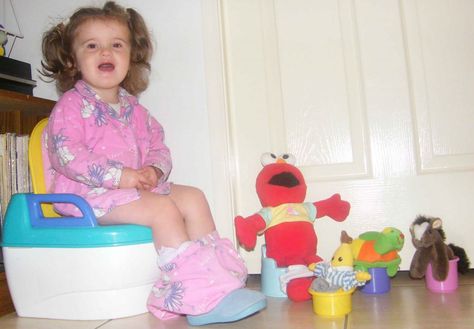 Say goodbye to the diapers. And let them know that this is the moment they become a big boy/girl!
Say goodbye to the diapers. And let them know that this is the moment they become a big boy/girl!
It helps to tie up their shirt so that they don’t have to mess with it when trying to learn to pull their underwear up and down. I just used a hair tie.
Give your child more drinks through the early steps (as much as he/she is willing to take in).
Then have your child walk over to the potty, and go through all of the same instructions, but this time with himself instead of the doll. Once you get to the stage where your child is literally sitting on the potty, encourage them to try to let their pee out. If child wants to get up right away, ask them in a fun, yet firm and encouraging way, to sit still and really try to focus on getting it out. Help your child to tune out all distractions. Help your child focus on you, what you’re saying, and their own body.
Stay right by him/her and speak in soft tones as if you are waiting for a big surprise. Say something like, “Let’s see if you can let your pee out and let’s be reaalllllly quiet to see if we can hear it hit the potty. Can you let it out? Just relax.” And then be quiet and wait.
Say something like, “Let’s see if you can let your pee out and let’s be reaalllllly quiet to see if we can hear it hit the potty. Can you let it out? Just relax.” And then be quiet and wait.
Once the house is quiet and movement stops and you have helped him to slow down, your child may go right then and there for first time…if so, then praise him/her!!! And go over and above!!! Go crazy celebrating…but I would warn you here, don’t go so far as to scare your child. Keep it contained enough to let them know you are absolutely pleased, but watch to not be overly loud or overly animated. Give stickers and give one of the bigger candies/treats! Celebrate the huge accomplishment! Make sure your child begins to connect what that feeling was as a GOOD thing to happen in the potty!
If child does not go, stay in the kitchen and continue rehearsing teaching the doll. Go through the process of teaching the doll 2-3 more times, letting child do as much as possible. After he completes a few more rounds, tell child it’s his turn again.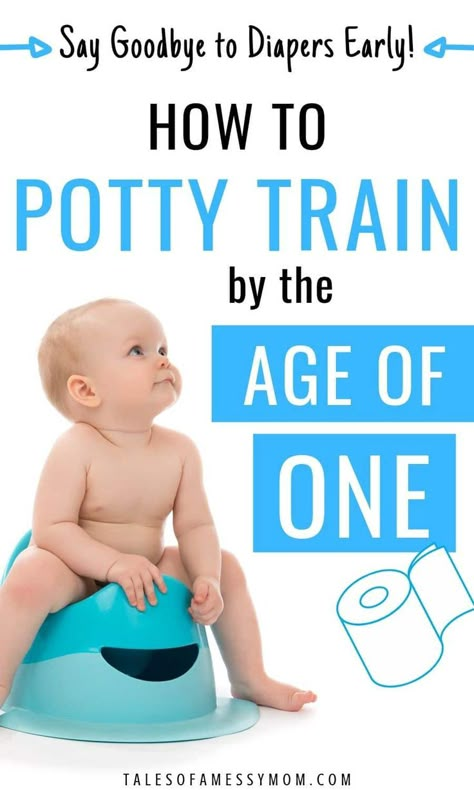
Go through all of the motions just like he taught the doll. When you get to the part where your child is on the potty again, slow it down again. Very soft tones, listening ears…talk to them in whispers and ask them if they can let their pee out.
Step 5:If child pees on the floor while in this stage…child must stay in wet pants!!! Don’t hurry to change him. Keep the wet underwear on for this step. It is important for your child to feel the discomfort of being wet while walking back and forth. Use the spot where they peed as beginning point A and the potty seat as point B. Take their hand and have them walk quickly from point A to point B. While walking, explain to them that this is where we go when we need to let out the pee and poop. Once you get to the potty, have them pull down their wet pants (only help if you have to), have them sit down and then stand, pull them up and walk through the whole exercise again. Your child may begin to cry. Don’t let this stop the process though. Comfort, connect, but be firm in what must be done. Love them through this, it isn’t fun for your child to have to figure this all out.
Comfort, connect, but be firm in what must be done. Love them through this, it isn’t fun for your child to have to figure this all out.
Repeat 10 times. Yes, 10 times. Yes, still in the wet underwear. Walk from the wet spot to the potty and back again 10 full times. At about round 6 or 7 you’re going to probably think “oh, that’s got to be enough” but please don’t stop short. Get through all 10. Encourage your child, love them through it. But be steadfast and keep reminding them as you walk together that we do not pee or poop in our pants. Keep saying, “We don’t like wet pants. We do not pee or poo in our underwear. We go to the potty to pee now.”
Have the child then get cleaned up. It will take longer but have your child be the one to take off their wet pants and then use wipes to clean off the urine off of their legs.
Then have them throw wipes away. Have your child put the new underwear on himself/herself. Have him walk his dirty pants over to the washer.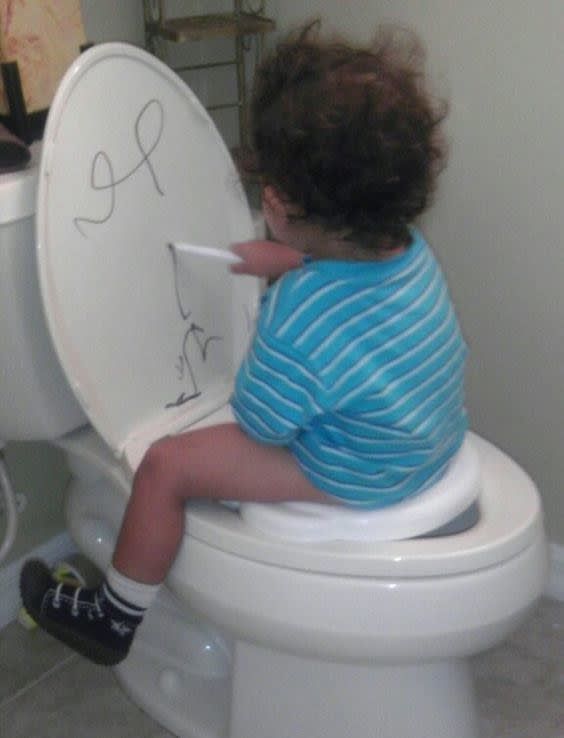 Let him begin to understand how much work it takes to have a mess like that.
Let him begin to understand how much work it takes to have a mess like that.
Now, you’re back to dryness again, but probably have hit a very low point with emotions.
Love and encourage your child, but do not tell them that peeing in their pants was a “good job.” Make sure you are explaining that they cannot do that anymore and that they must pay attention to their body now. Your child will most likely be in tears, but do everything you can to help them understand that although they can’t do that anymore, but you’re there for them, and you’re going to show them everything they need to learn. Remember Part 1 of this series and remember to be their best friend in this. You’re the momma and in those moments you’re the only one your child has to lean on.
Start again with salty snacks. Have another beverage.
The trick is to get as MUCH practice as you possibly can during this training day which means give more and more liquids. Without practice the skill won’t be mastered.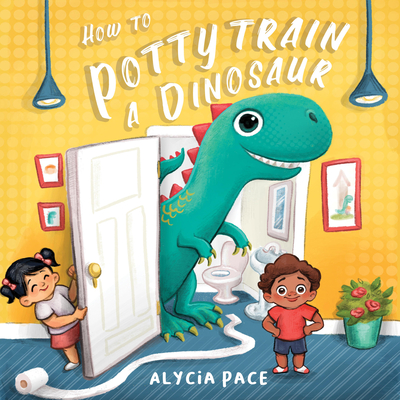 Without drinks there won’t be much practice! ☺
Without drinks there won’t be much practice! ☺
So, give them as many fluids as possible. Keep reading and singing together, and keep watching the Daniel Tiger show.
Make up your own potty song and try as best as you can to keep focus on things regarding toilet training, not talking about other topics, but staying on anything related to potty training day. Distraction from the potty won’t help.
Read a story. Play with cars.
Spend time together, staying in the kitchen in order to keep him/her as close to the potty as possible. Play with blocks, do some puzzles, play with dolls or play dough.
After about 20 minutes ask the child if they have dry pants. If child says yes, then give them one of the small candy treats. If the answer is no, then once again go through the entire process from above.
If pants are dry, then set the timer for 10 more minutes. Keep close watch on your child to see if body movements give you any warning that the feeling to pee is near.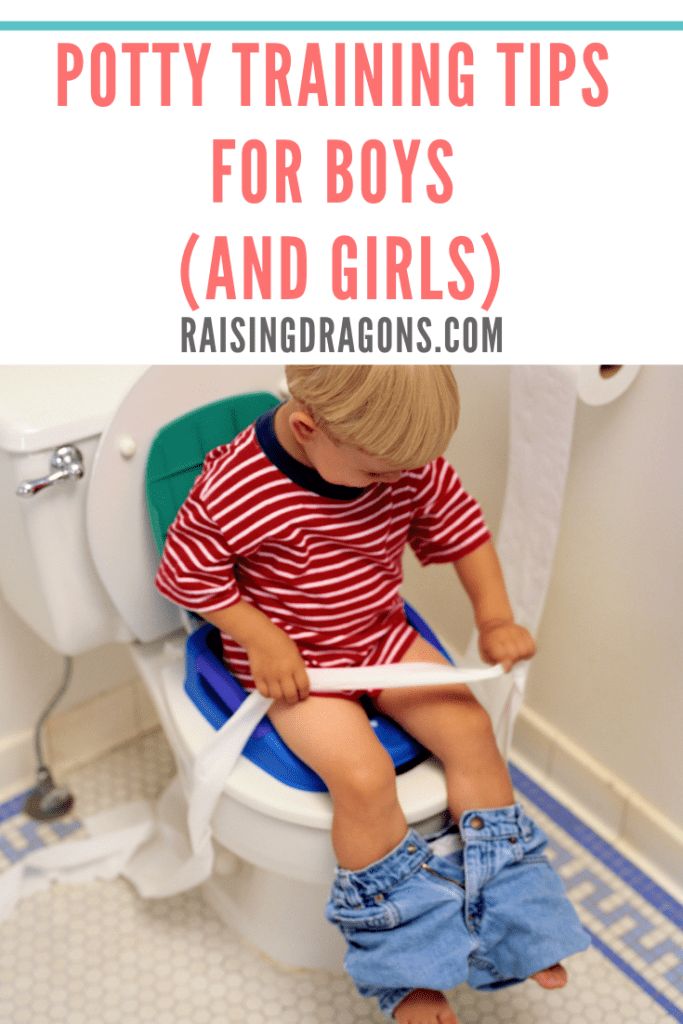 After 10 more minutes ask again if their pants are dry. If yes, give another small treat. Set the timer again for 10 more minutes. The longer your child goes without peeing the more heightened your senses need to be to help them recognize when it may be coming. You can choose to sit them on the potty each of those times to help them re-learn the steps of how to get their underwear up and down, or you can choose to let them wait and tell you it’s time to go. I typically have gone the first 20 minutes and ask if they are dry, give the small treat and then go through one more segment of 10 minutes totaling 30 minutes since the last pee. If my child had not gone at that 30 minute point I would have him sit down on the potty to “try”. If my child did not “go” at that 30 minute point I would make them sit and “try” at every 10 minute interval that followed until he did finally go.
After 10 more minutes ask again if their pants are dry. If yes, give another small treat. Set the timer again for 10 more minutes. The longer your child goes without peeing the more heightened your senses need to be to help them recognize when it may be coming. You can choose to sit them on the potty each of those times to help them re-learn the steps of how to get their underwear up and down, or you can choose to let them wait and tell you it’s time to go. I typically have gone the first 20 minutes and ask if they are dry, give the small treat and then go through one more segment of 10 minutes totaling 30 minutes since the last pee. If my child had not gone at that 30 minute point I would have him sit down on the potty to “try”. If my child did not “go” at that 30 minute point I would make them sit and “try” at every 10 minute interval that followed until he did finally go.
Keep going this way all the way until lunch. Offer a lunch, but more than likely your child will not eat much because of all of the liquids and snacks they have consumed by this point.
By early afternoon your child has (hopefully) had numerous times of peeing in the potty by now. Most likely your child would have had at least one accident, maybe more. Typically for mine, the kids were fully trained and could recognize the feeling to have to pee by about 1:30-2 in the afternoon.
Nap Time:
Most likely you’ll hit that point in the day when your child begins to get tired and you are thinking you aren’t quite sure if they’ve got this new skill mastered or not. Whenever nap time comes, go ahead and make the choice if you want to put your child in pull ups, plastic covers over normal underwear, or in just underwear. It’s totally your choice. When I first trained Kate (our oldest), I bought a package of Pink Dora the Explorerer Pull-Ups. I wasn’t sure the method was going to work, so I had those on hand just in case. I put her in a pull up for that first day’s nap and then during the first night. The next day, though, she said she didn’t need them and told me she wanted to wear normal underwear.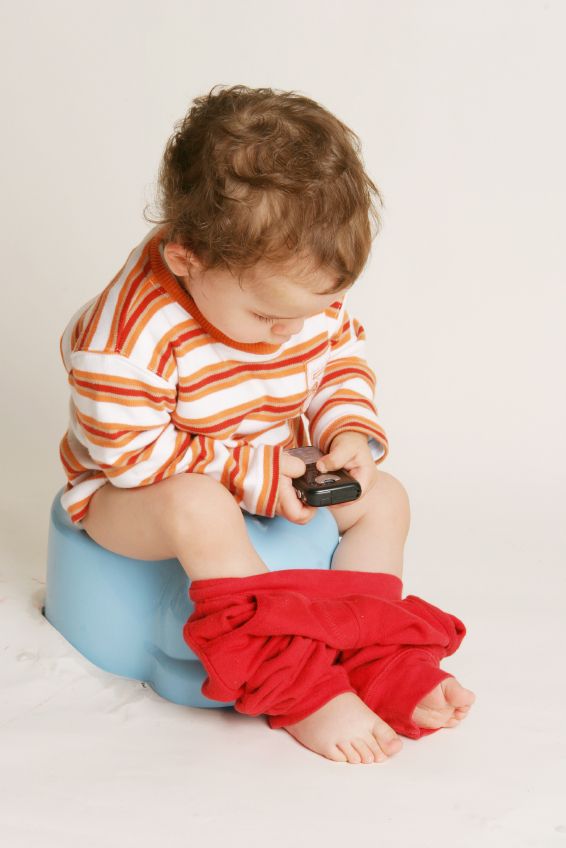 So, I told her if she could stay dry in the pull ups for 3 nights I would never make her wear them again. Sure enough, she stayed dry, so we kept our promise to her. She’s never wet her bed.
So, I told her if she could stay dry in the pull ups for 3 nights I would never make her wear them again. Sure enough, she stayed dry, so we kept our promise to her. She’s never wet her bed.
When I trained Kai, I had actually saved the same package of pink Dora pull-ups that Kate never used. I put one of those on Kai for that first nap and first nighttime. He hated wearing pink so he told me there’s no way he wanted to keep wearing them! So I made him the same deal. If he could stay dry for 3 straight nights he would never have to wear those silly pink Dora pull-ups anymore either. (Maybe the trick with boys is to get them pink pull-ups!!!!) It worked like a charm and he’s never wet the bed.
With Corban AND Canon I still had the same package of pink Dora pull-ups! And both of them were the exact same as Kai. No way they wanted to wear pink! So, they also asked to not have to wear them anymore.
Every child is different. Whatever you decide to you use, the one thing that is NO longer an option is diapers.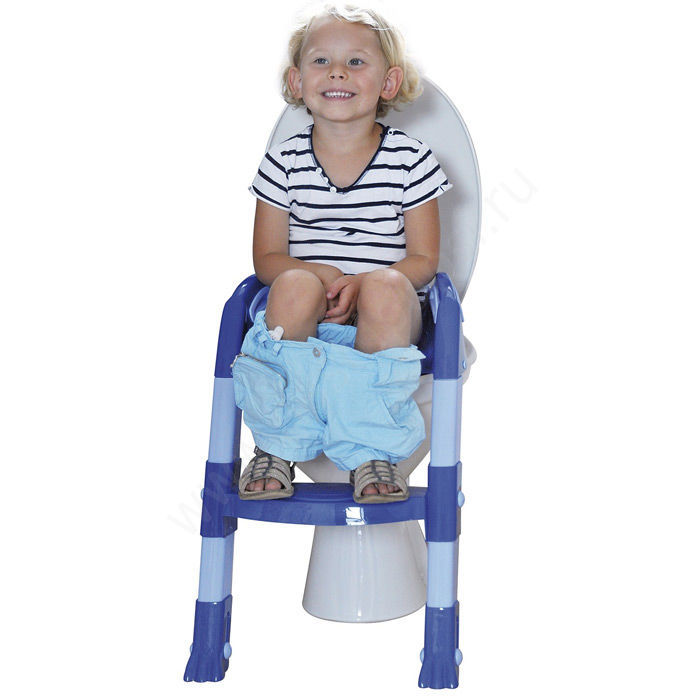 And if you DO choose to do pull-ups refer to them as “night-time underwear” to make sure they still think of them as big boy/girl pants instead of diapers.
And if you DO choose to do pull-ups refer to them as “night-time underwear” to make sure they still think of them as big boy/girl pants instead of diapers.
After Nap Time
Once your child wakes up, immediately take your child to the potty to try to pee. Change out of a pull up right away and remind them of the steps they learned that morning. Make sure you’re still encouraging and make sure they realize that they need to continue learning to recognize that feeling. If your child pees as soon as they wake up, set a timer in your mind to have them try again about 30 minutes later. If your child does not pee, set a timer in your mind to have them try again in about 10 minutes (or less). Most likely it will come soon so be ready.
That’s a WRAP!Keep practicing, keep practicing and keep practicing! The more drinks you give your child, the more they will have to pee. The more practice they have, the more you are able to re-enforce the skill. Once you feel your child has mastered the skill, meaning they have told you a number of times they need to go and have successfully peed in the potty, your child is considered trained.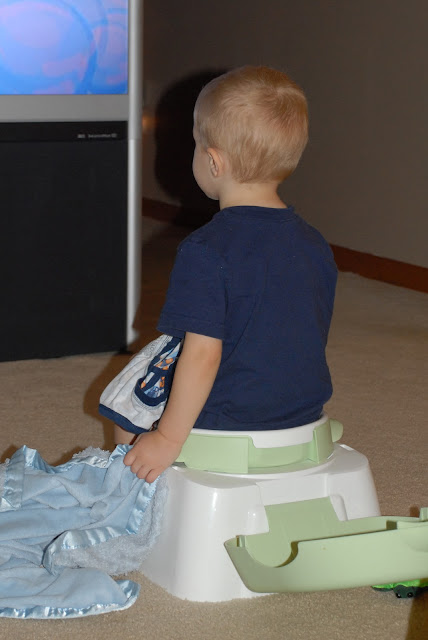 Spend a few moments celebrating with others in your family. Have a list ready of people (family and close friends) to call that can congratulate your child for a job well done! Notice the time on the pic below when we made this phone call, we waited until he had peed successfully right after his nap was over.
Spend a few moments celebrating with others in your family. Have a list ready of people (family and close friends) to call that can congratulate your child for a job well done! Notice the time on the pic below when we made this phone call, we waited until he had peed successfully right after his nap was over.
This is Matt’s mom and the kids call her Meme! She’s always on our “Celebrate Yay Potty Day” List! She cheers and claps and has joined in on the excitement for each of our kids! They have each loved getting to call her afterward.
I plan to still write one more final post, I’ll share more specifically what the days that follow will look like, what to do if things have gone badly with potty training already, and what to do with a few circumstances that are less than ideal. There’s some advice that may help with troubleshooting how to move forward if things haven’t gone well so far.
Please let me know if you have ANY questions. I would love to help in any way I am able! And Happy Potty Training to you and your little one!
HOW TO TEACH A CHILD TO THE POT?
HOW TO TEACH A CHILD TO THE POTTY?
Some mothers try to potty train their baby as early as possible in order to get rid of unnecessary laundry and diaper costs as soon as possible. Others put off potty training until a later date.
Others put off potty training until a later date.
Every well-read mother knows when babies usually start to crawl, when to walk, when to talk. But when potty training is as easy as possible, few people know.
It happens that months of torment and constant struggle pass, and then, r-r-time, and in a few days the child has learned to go to the potty. Mom sighs with relief: "Finally, taught!".
What really happened? It's just one of those "mysterious" periods of natural potty training.
I won't bore you, I'll get straight to the point. Immediately I ask you to excuse me for too detailed explanation of the physiology of the child, without this article would not make sense.
Let's start with the most common question,
When should I potty train?
Arbitrary retention of urination and defecation is produced from six months to a year of a child's life. During this period, the child is actively exploring his body, its capabilities.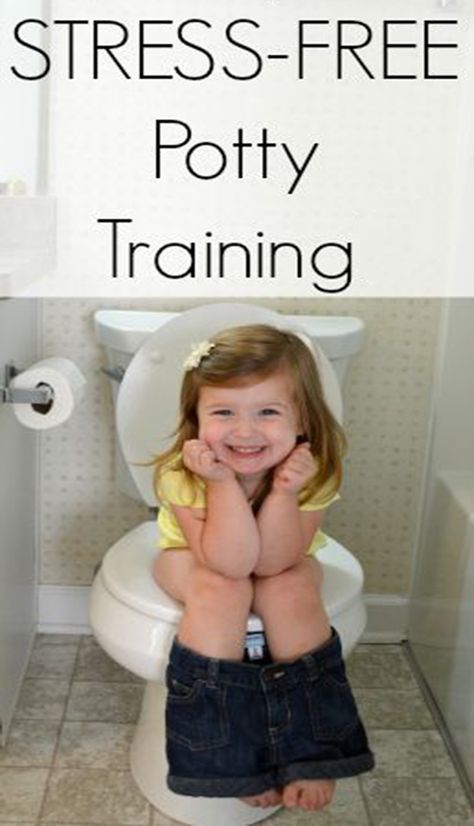 For example, he can pee and pat the puddle with his hands, he can carefully observe the process, and then examine the contents of the pot.
For example, he can pee and pat the puddle with his hands, he can carefully observe the process, and then examine the contents of the pot.
The child plays with voluntary retention of urination. This trains his ability to regulate urination.
At this time, you can begin to offer the baby to sit on the potty, but rather to get to know him, and not for regular natural use. Most likely, it will not be possible to form a stable habit of using the potty at this age of an active baby, since he still cannot sit in one place for a long time. And with a calm baby, it can work out.
During the so-called "crisis of one year" (10-13 months), the child strives for greater independence and may rebel against the prohibitions and coercions of adults. Including against using the potty.
Therefore, during this period, many babies refuse to sit on the potty, even if they have been accustomed to it.
A after the end of the “crisis of one year” (from about 14 months) it is already possible to teach the child to consciously use the potty independently.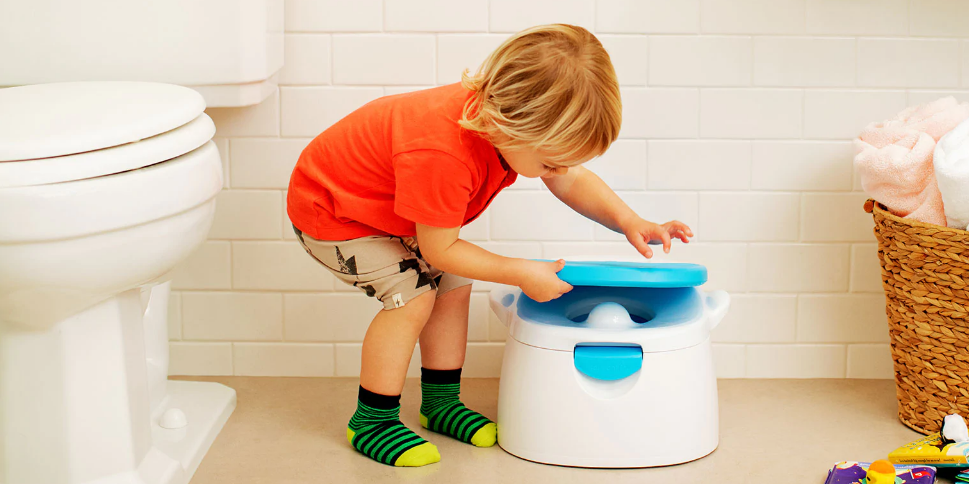
During potty training, chances are you won't be able to avoid puddles.
But it is easier to negotiate with 2-year-old children than with very young ones, because they already understand speech, and they can be explained where and why to go to the toilet, and therefore puddles can be avoided or reduced to a minimum. In addition, at this age, kids are actively interested in toileting.
Of course, all figures are approximate, since the development of each individual child may differ from the average.
In the matter of potty training (as in other matters of child development), it is necessary to focus not on numbers, but on the behavior of the child.
Let's say the moment is right and you decide to slowly start potty training your child.
Why quietly? You can speed up this process. And do it not by force, but gently and naturally. Read more...
How to potty train a child quickly?
The easiest way to learn to use the potty is for children who did not wear diapers (mothers planted them), for them the process of accustoming occurs quickly and without puddles. But even with "diaper" children, not everything is lost, you just have to endure puddles and piles on the floor (and in other places) for some time.
But even with "diaper" children, not everything is lost, you just have to endure puddles and piles on the floor (and in other places) for some time.
Here are some tips to help you get the most out of your learning process:
- If before potty training the child spent all the time in diapers, then they will have to be removed. Why?
- The baby must study his body in order to know what the buttocks and genitals are for.
- He must establish a connection between the urges and the departures that follow them. To do this, he must see the act of urination and defecation. And not just once.
o Use an example to show when and how to use the potty.
To do this, observe the child. You will notice that before you relieve yourself, he shows discontent or calms down (tenses, grunts), and at this moment you offer the baby a pot. It is good if the child also sees, using the example of adults or older children, where and how the need is managed.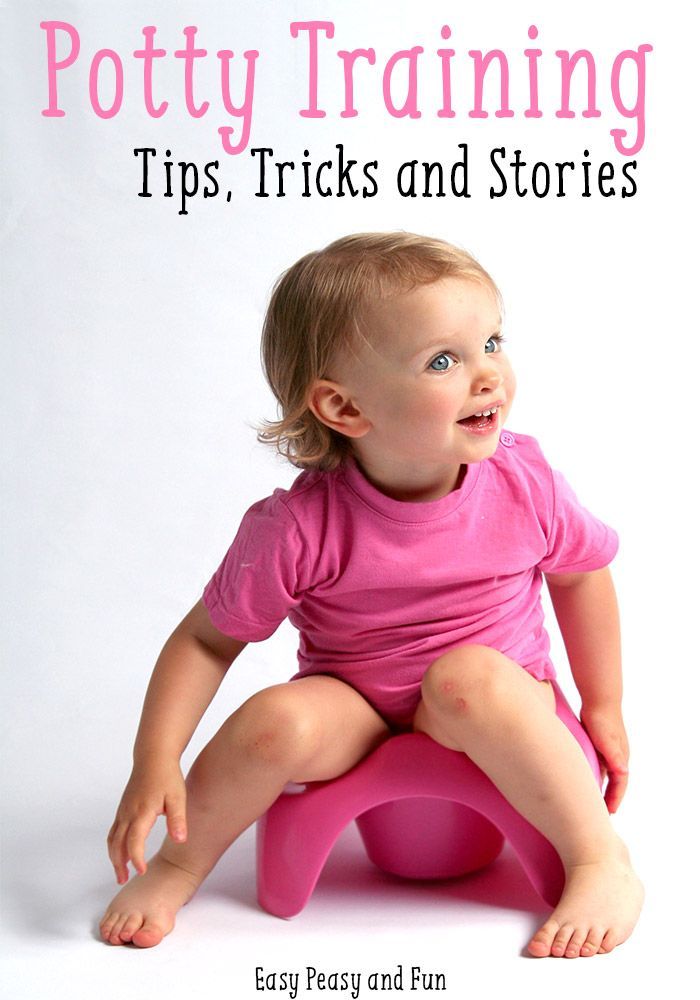
-
- A naked baby won't have to take anything off to sit on the potty.
- The pot should be within sight and reach, that is, on the floor in the children's room, let the child get to know him, sit if he wants.
- It is necessary to offer the baby a pot with words explaining why it is needed: “Sunny, let's pee (poop) in a pot ... The pot is needed in order to pee and poop in it ... Where should I pee (poop)?”.
- Every time after an “accident”, gently remind your child about the existence of a pot: “Sunny, where should I write?”. You can express your disappointment, but in no case do not scold the baby, and do not force him to sit on the potty, so that he does not develop an aversion to this subject. Be calm and patient!
- If the potty has been used as intended, praise and give your baby a hug or a pat on the head to help the child feel positive about using the potty.
- Offer your baby a potty immediately after every nap.
 And also after eating (eating activates intestinal motility, which contributes to defecation).
And also after eating (eating activates intestinal motility, which contributes to defecation). - To go to the toilet, you need to relax. In a stressful situation, in an unfamiliar environment, with strangers, the baby cannot relax well and go to the potty. This must be taken into account when potty training.
For example, I started teaching my "diaper" baby in this way at 1 year and 8 months. Two weeks later, he sat down on the potty himself for the first time, a week later he used it on his own without a reminder for its intended purpose. All this time he ran naked, and I - with a mop. But the result was worth it! No coercion, everything happened by itself!
It takes a different amount of time for each baby to learn to use the potty on their own without being reminded.
The older the child and the more time he spends naked, the shorter the time for potty training.
That is, to potty train a one-year-old naked baby, it will take a month or two, and a 2-year-old - a week or two.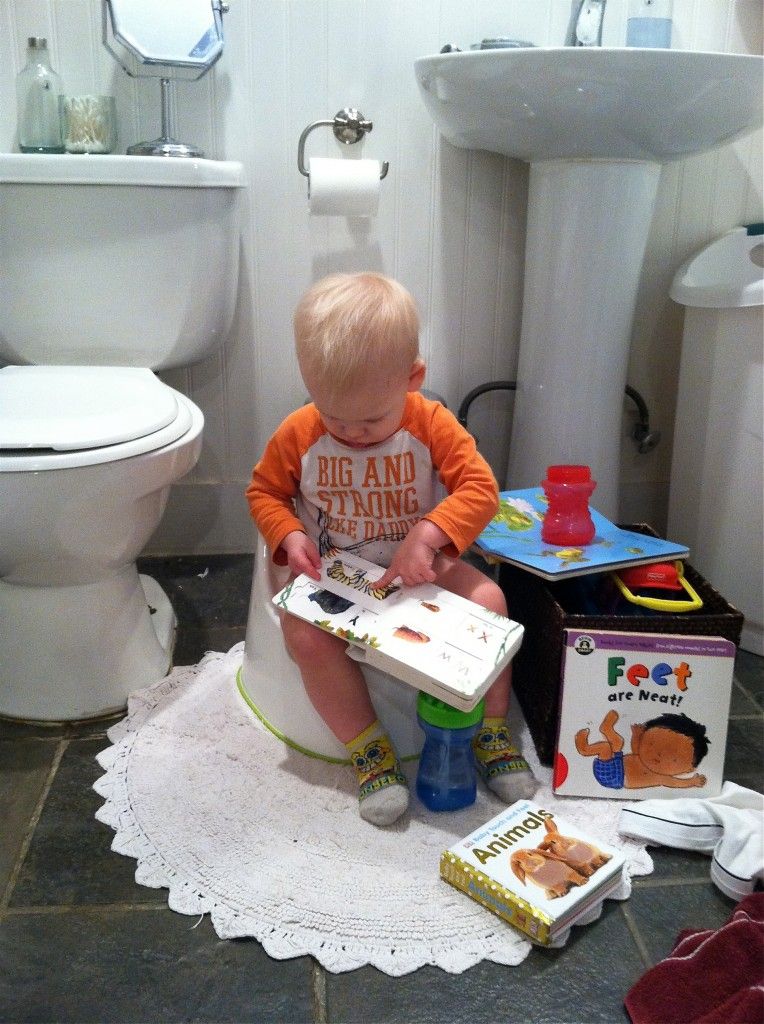
Why do potty training fail?
Even a child who already knows how to go to the potty can have "accidents":
- At first, while potty training is in progress.
- When a baby is teething.
- A child who is addicted to play may not feel the need to urinate for a long time, even if the bladder is full. Therefore, in this case, an “accident” can happen.
- During the "crisis of one year".
How to survive puddles?
During the potty training period, it is better to remove the carpets in the room where the baby will spend most of the time, and cover sofas and chairs with disposable diapers or large towels folded several times.
Quickly remove puddles from the floor with a mop with a foam nozzle that quickly absorbs liquid.
How to refuse a diaper on the street?
Some time after the potty training has been established, your baby can be taught to go outside without a diaper.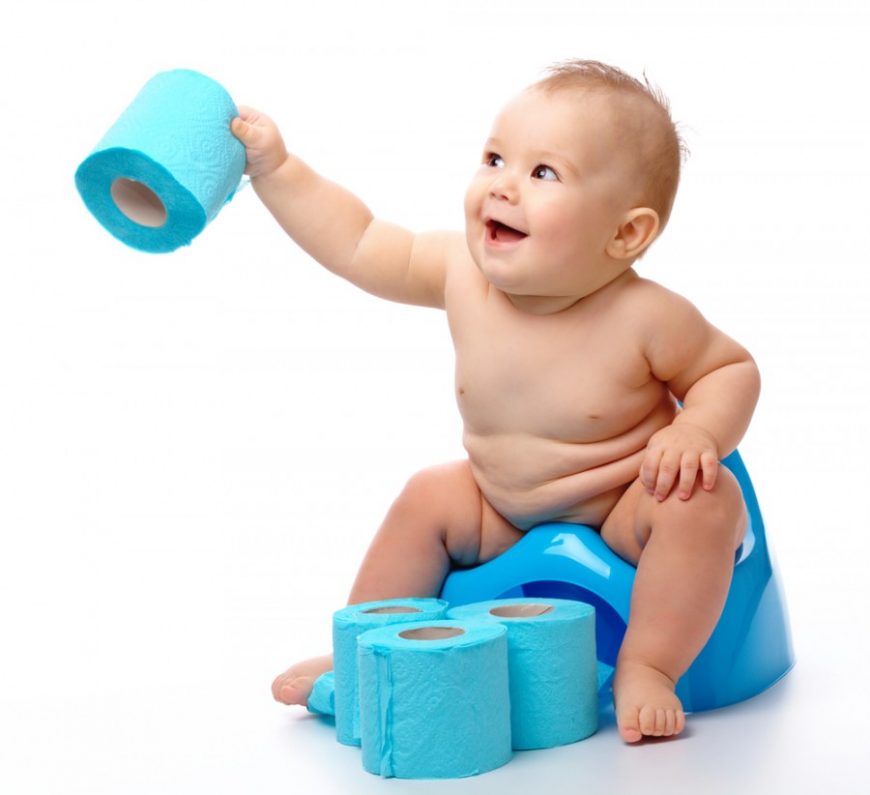 Best during the warm season.
Best during the warm season.
Usually, babies who have not worn disposable diapers, by the time they are potty trained, already know how to beg and even endure during the entire walk.
"Pampered" children will also be fine, but you will have to take off the diaper before going for a walk and stock up on a pack of spare pants.
Here are some tips on how to proceed:
- Before going out, invite your child to use the potty. If you don't want to, don't insist.
- If you do not want to go to the bushes, then take a pot with you.
- Don't forget to bring a few pairs of pants (and possibly socks).
- Every time after an “accident” on a walk, gently explain to the baby what happened: “Sunny, you described your pants! Look, they are wet! Let’s better go potty next time (we’ll water the grass)!”. And then change your baby.
- If the baby asked, praise and gently hug the baby or stroke the head so that the child has pleasant emotions.

- After the walk, invite your child to use the potty.
After a while the child will begin to endure the whole walk. And you will not need to carry a potty and spare clothes with you.
How to refuse a night diaper?
Some time after the potty training is established, your baby will wake up at night to use the potty. And then it will be possible to do without a diaper at night.
Babies who do not wear disposable diapers do so at an earlier age.
Usually, by the age of 2 years, the function of urinary retention is so strengthened that it begins to manifest itself during sleep, the child stops waking up at night to go to the toilet.
It is not possible to teach a small child to sleep all night without peeing. A person cannot control himself during sleep.
The only thing that can be done is to invite the child to use the potty before bed.
Why does a child over 2 years old pee in bed?
The fact is that if the mother herself puts the baby on the potty , or the child goes to the potty only in order for the mother to praise or so that the mother does not scold for the described pants, BUT at the same time does not feel the need for this inside himself (in other words, he does not agree to “be friends” with the potty), then at night, when the conscious control sleeps with the body, its subconsciousness throws out such tricks.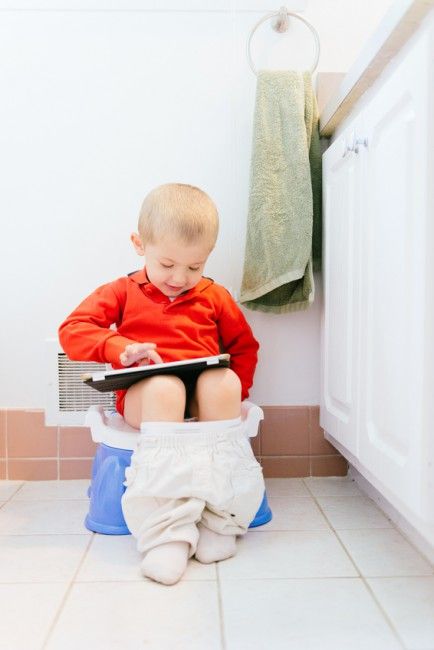 That is, he pees in bed.
That is, he pees in bed.
If the baby enjoys going to the potty himself , that is, his skill is not only conscious, but also subconscious, then there are no problems at night.
To make your little one love using the potty:
- do not scold the child for the described pants;
- do not praise too violently and even more so do not reward the baby for going to the potty, just gently stroke the baby on the head and smile at him;
- do not put the baby on the potty, if he can already do it himself, give him the freedom to act in this intimate matter.
Thus, the baby will go to the potty not to be scolded or, on the contrary, praised, but in order to enjoy the realization that he can control his body, which is nice and great!
Good luck!
No, not that...
PATIENCE to you and LOVE to your child! Exactly!
Potty training
When to start
The normal development of young children is largely determined by proper care for them. The process of potty training is an important stage in the development and maturation of the child, as well as in the formation of his relationship with his parents. Many parents tend to become overly anxious when their child does not develop according to their expectations.
The process of potty training is an important stage in the development and maturation of the child, as well as in the formation of his relationship with his parents. Many parents tend to become overly anxious when their child does not develop according to their expectations.
The methods of "early potty training" practiced until recently (during the first year of life) should be considered outdated and non-physiological, since their use does not take into account the degree of maturity of the muscles and nervous system of the child (in particular, the innervation of the bladder and intestines). As a result, learning becomes a long and unproductive process. In addition, when using them, children may experience negative reactions (since education is built on pressure from parents) and somato-neurological dysfunctions, which subsequently is fraught with problems such as constipation, urinary / fecal incontinence, numerous neurotic reactions (including logoneurosis, tics, etc.). .), and upon reaching a certain age - enuresis, overactive bladder and persistent encopresis.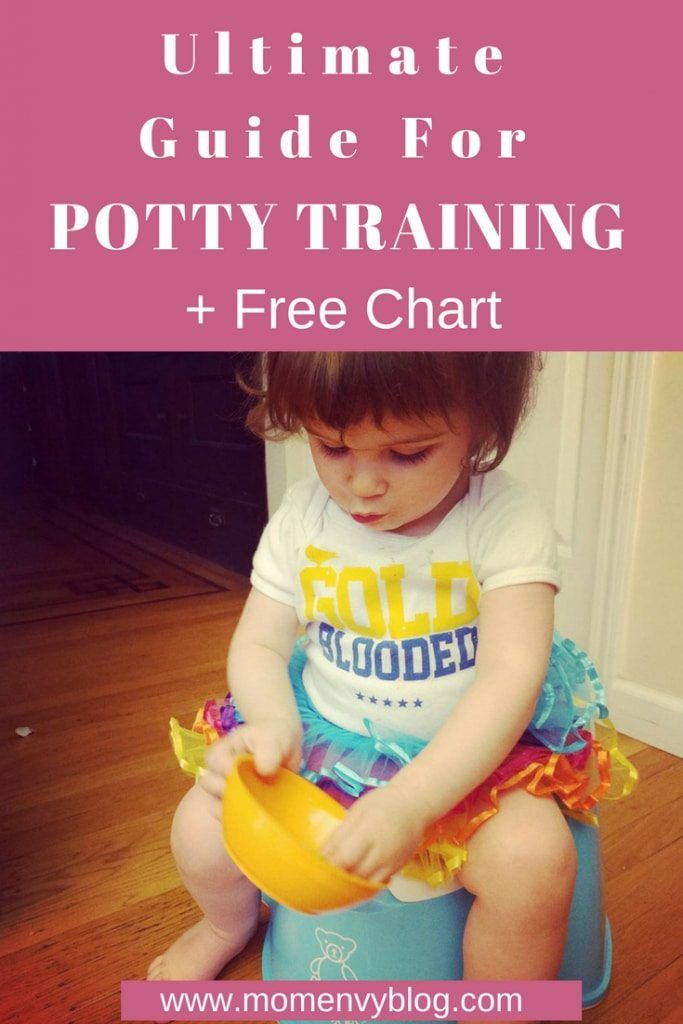 Forced potty training at any age can be stressful for both the child and the parent. The described stress becomes even more pronounced if the child is not able to understand or interpret the command received. Attempts to impose on a child such methods based on adult dominance inevitably lead to a delay in the learning process and low efficiency.
Forced potty training at any age can be stressful for both the child and the parent. The described stress becomes even more pronounced if the child is not able to understand or interpret the command received. Attempts to impose on a child such methods based on adult dominance inevitably lead to a delay in the learning process and low efficiency.
The described methods of early potty training are reflex, that is, based on the development of a conditioned reflex, and not a conscious skill. In the process of training, parents determine the signals and "body language" of the child before urination or defecation, similar to how pets are toilet trained. Such techniques are not based on real learning, but on the development of a reflex, and therefore are ineffective. The success of the process depends on whether the adult can recognize the need or desire of the child to go to the toilet (there are no basic elements of learning, and the process is not associative). The "skill" acquired by the child is of a non-permanent nature and can be lost in any stressful situation (for example, illness or moving from an apartment, a quarrel between parents) or other adverse circumstances.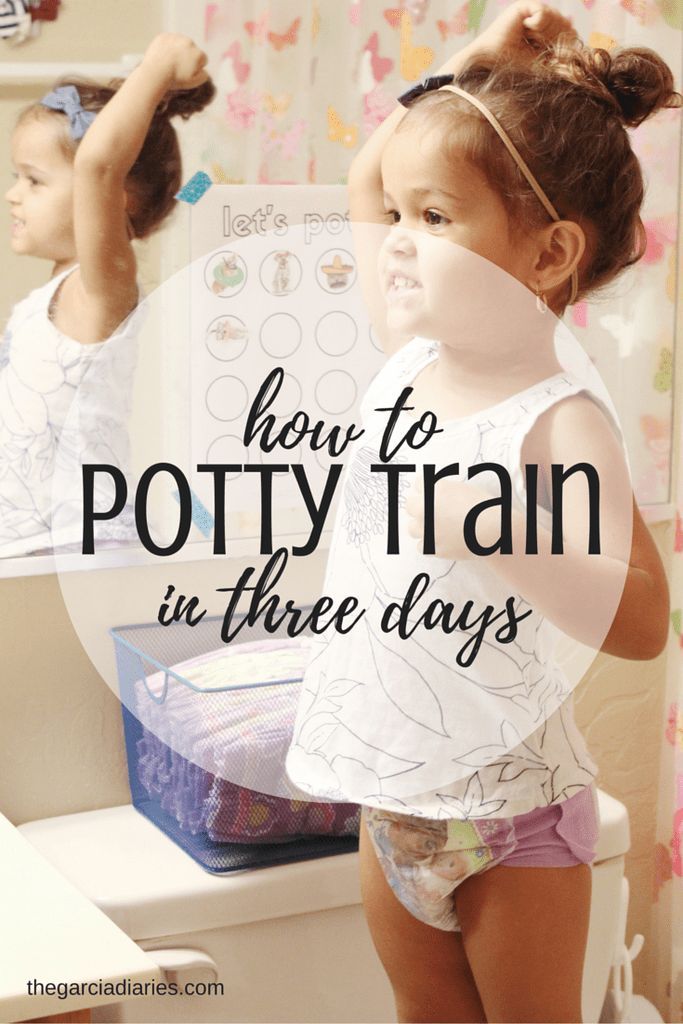 Therefore, attempts to force a child to potty train before he reaches physical readiness and / or increased intensity of training in no way accelerate or bring the desired result closer. Successful potty training is the development of a cognitive (conscious) skill or ability that should be centered around the child; it should be positive and entertaining. It is important to remember that an acquired reflex is easily lost if it is not a learned pattern of behavior.
Therefore, attempts to force a child to potty train before he reaches physical readiness and / or increased intensity of training in no way accelerate or bring the desired result closer. Successful potty training is the development of a cognitive (conscious) skill or ability that should be centered around the child; it should be positive and entertaining. It is important to remember that an acquired reflex is easily lost if it is not a learned pattern of behavior.
To make the process of potty training quick and easy, parents should be informed about the “child-centered” method.
The “child-centered” or physiological toilet training method is a method that takes into account the degree of maturity of the central nervous system. It is the central nervous system that provides innervation to the muscles, organs of the genitourinary system and the gastrointestinal tract of children. This approach helps parents to understand the child correctly and direct the process of potty training in accordance with the level of development of the child.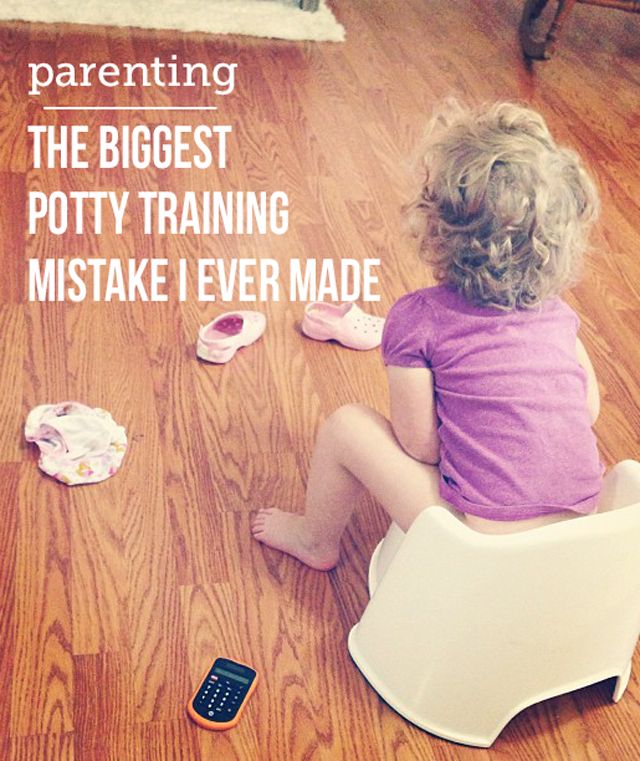 According to this method, the child becomes the main figure, his self-confidence and self-esteem increase. Training, according to this technique, is designed not only to develop a reflex in a child, but to accelerate the assimilation of relevant information or skills, in the case of potty training, the child's acquaintance with his own body. The physiological model takes into account three main components of child development: physiological maturity (strengthening the muscles of the sphincter of the bladder and intestines, the necessary development of the central nervous system), psychological and emotional readiness (understanding and desire to follow instructions). According to the literature, a healthy child reaches the required physiological maturity at an average age of 18 to 24 months (American Academy of Pediatrics, 2003).
According to this method, the child becomes the main figure, his self-confidence and self-esteem increase. Training, according to this technique, is designed not only to develop a reflex in a child, but to accelerate the assimilation of relevant information or skills, in the case of potty training, the child's acquaintance with his own body. The physiological model takes into account three main components of child development: physiological maturity (strengthening the muscles of the sphincter of the bladder and intestines, the necessary development of the central nervous system), psychological and emotional readiness (understanding and desire to follow instructions). According to the literature, a healthy child reaches the required physiological maturity at an average age of 18 to 24 months (American Academy of Pediatrics, 2003).
Up
How a baby's body works
When potty training a child, you should know that the success of training depends entirely on how ready his body is for it.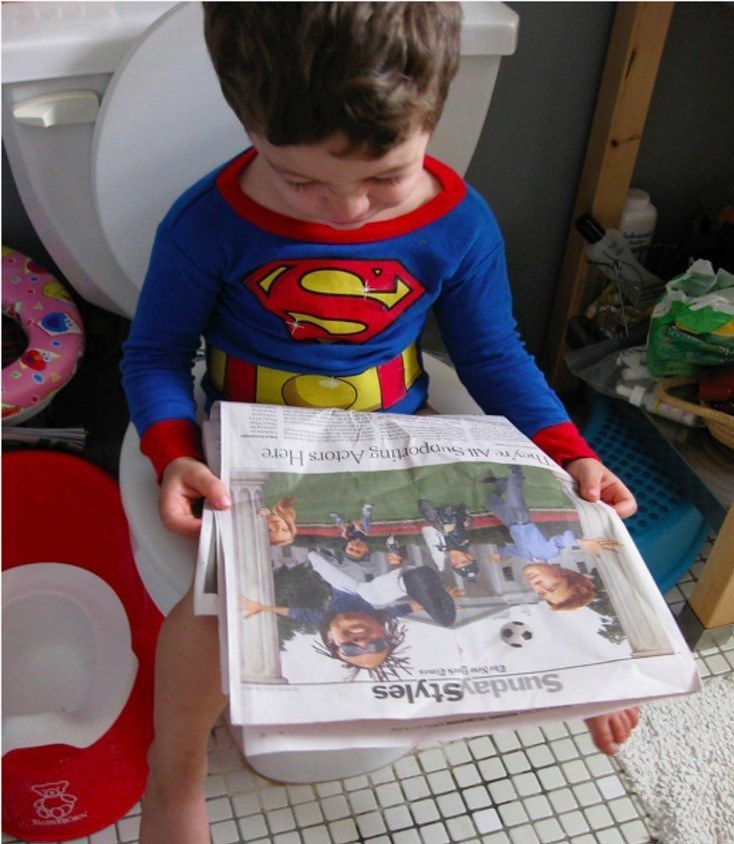 It has been proven that the child's body is ready for potty training on average no earlier than 18 months. A child can consciously go to the toilet only when he develops a connection between the nervous system and muscles. This connection is finally formed around the age of 18 months and consists of numerous neural structures that connect the spinal cord with the bladder and intestines. When the bladder or intestines are full, a signal is transmitted along the nerves to the spinal cord, from there to the brain, and the baby understands that he wants to pee or poop. Only then can the child consciously sit on the potty and do their thing. Knowing this, one can come to very significant conclusions, which, however, are quite obvious. The sooner you start the process of potty training, the more effort it will require from you. Potty training is more successful, painless and easier, the higher the level of physiological development of the child. And if you start training when the child's body is fully prepared for it, you and your child will succeed much faster and easier.
It has been proven that the child's body is ready for potty training on average no earlier than 18 months. A child can consciously go to the toilet only when he develops a connection between the nervous system and muscles. This connection is finally formed around the age of 18 months and consists of numerous neural structures that connect the spinal cord with the bladder and intestines. When the bladder or intestines are full, a signal is transmitted along the nerves to the spinal cord, from there to the brain, and the baby understands that he wants to pee or poop. Only then can the child consciously sit on the potty and do their thing. Knowing this, one can come to very significant conclusions, which, however, are quite obvious. The sooner you start the process of potty training, the more effort it will require from you. Potty training is more successful, painless and easier, the higher the level of physiological development of the child. And if you start training when the child's body is fully prepared for it, you and your child will succeed much faster and easier.
Up
Early successes
True, many patient and active parents manage to achieve excellent results already in the first year of life. Quite often, proud statements are made that a child at 10, 9, 8, even at 7 months old, pees on the “pee-pee” command, and poops only after “ah”. And there is absolutely nothing surprising in this. It is not difficult to achieve the appearance of a conditioned reflex by repeated beeping and aakan, only this reflex is not quite what we need. Why? Yes, because this is the connection between the process of emptying the bladder and the sound "wee-wee." And if this sound is pronounced often and for a long time, and if anyway you are not left alone until you pee, then this connection will be established sooner or later. But the chain should be different: not “wee-wee” - filling the bladder - urination, but filling the bladder - a pot - urination. That is, the physiological process (filling the bubble), and not the sound stimulus (“pee-pee”), should become the motive for the potty.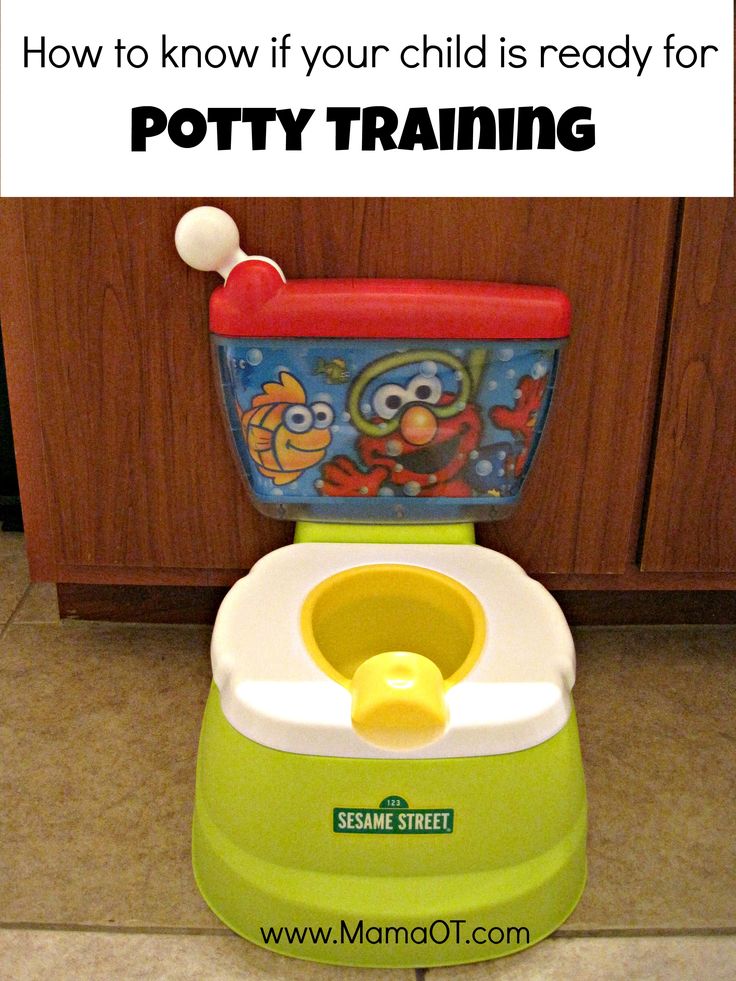
| Potty training around 18 months of age | Potty training at an earlier age |
| Child consciously controls all processes | Process based entirely on reflexes |
| Acquired skills are not lost | With any changes in a child's life, he quickly forgets everything he has learned |
| Teaching is faster and easier | Teaching is longer and harder for the child |
| The child enjoys his successes and the process itself | Frequent misses, more stress for the child |
Payback for early success comes in the second year of life.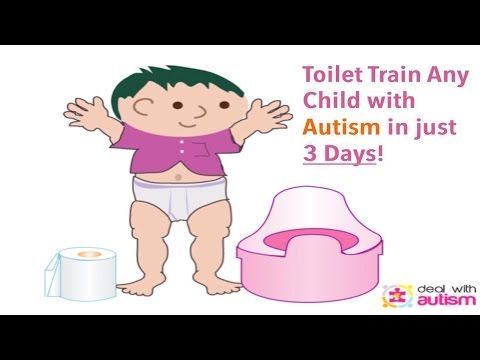 A supposedly capable and developed child, who has been sitting on the potty since the age of 9 months, suddenly, for some “incomprehensible” reasons, stops doing this, and actively fights for his freedom with anxious relatives. And the considerations are very understandable - the time is coming for the formation of that very normal, natural control over secretions, which we have already talked about. The bladder is empty, and they are here climbing with their "wee-wee" ... No matter how "amazing success" you have achieved, but before the child is ready for potty training (and this is approximately 18 months), these successes will be temporary, and misses are frequent. And this must be treated very philosophically. There is absolutely nothing wrong with the fact that you will be able to introduce your child to such an interesting thing as a potty. But this acquaintance, at least from the point of view of medical science, will be superficial, and the skills developed are not stable.
A supposedly capable and developed child, who has been sitting on the potty since the age of 9 months, suddenly, for some “incomprehensible” reasons, stops doing this, and actively fights for his freedom with anxious relatives. And the considerations are very understandable - the time is coming for the formation of that very normal, natural control over secretions, which we have already talked about. The bladder is empty, and they are here climbing with their "wee-wee" ... No matter how "amazing success" you have achieved, but before the child is ready for potty training (and this is approximately 18 months), these successes will be temporary, and misses are frequent. And this must be treated very philosophically. There is absolutely nothing wrong with the fact that you will be able to introduce your child to such an interesting thing as a potty. But this acquaintance, at least from the point of view of medical science, will be superficial, and the skills developed are not stable.
Up
How to know if a child is ready
In order for the process to go as smoothly as possible, you should know some signs that indicate the mental and physiological readiness of the child's body to learn toilet science.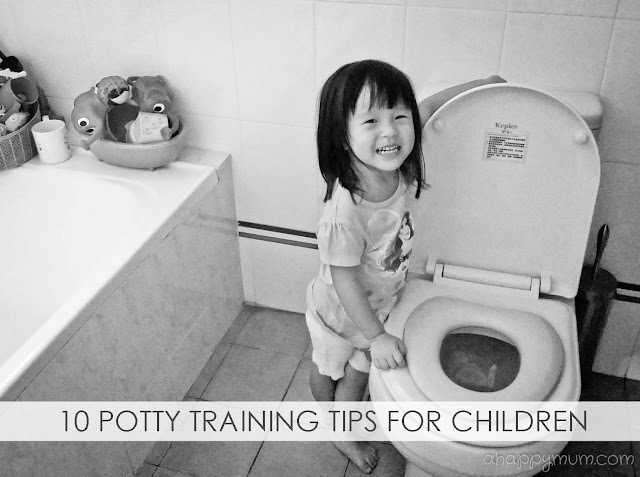
These signs include:
- establishment of a more or less stable defecation pattern
- Keep diapers dry for more than 2 hours
- knowledge of body parts and names of garments
- knowledge or understanding of the words "pee" and "poop"
- demonstration of negative emotions from being in soiled diapers
- desire to dress and undress independently
- desire to imitate adults
- interest in the toilet room and the processes taking place there
And, finally, the most reliable sign: the ability to communicate the word “I want” to parents in any way — with a word, facial expressions, gestures. And not because it will be easier for mom and she will have time to put the child on the pot - this indicates that the baby has learned to communicate!
Up
10 Rules for Successful Potty Training
Is your baby about 18 months old? Did you notice any of the above signs of readiness in his behavior? So, you can start mastering a new complex science.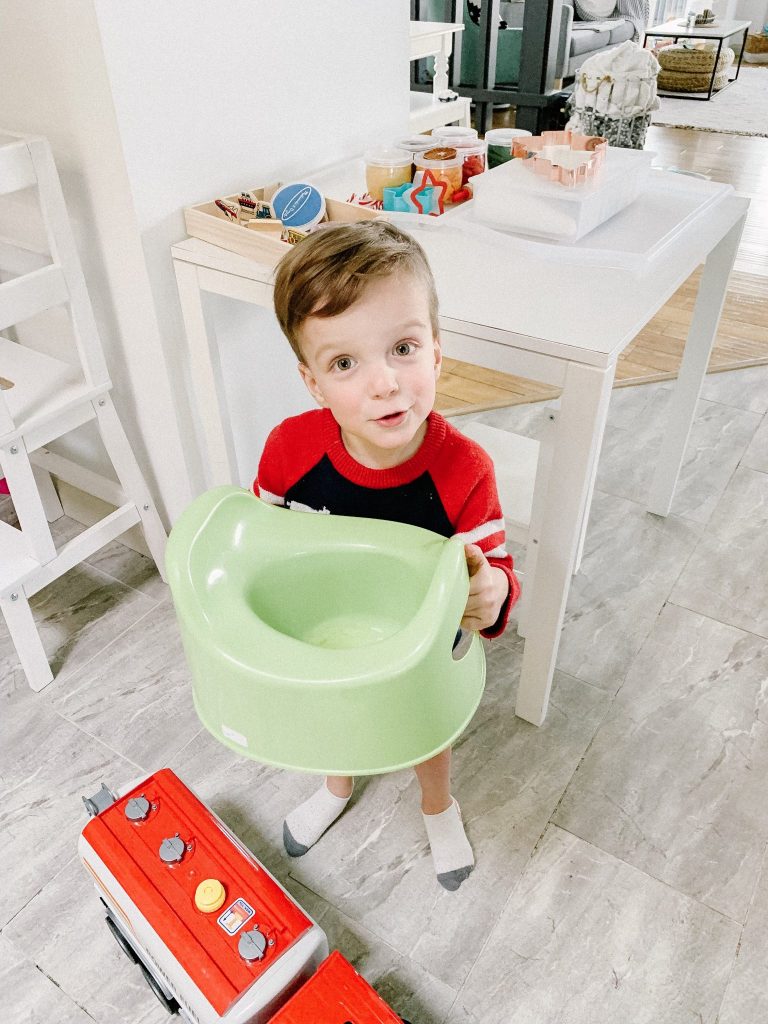 Let's get started.
Let's get started.
1. In addition to the readiness of the child, there must also be the readiness of adults. Obviously, at the stage of transition from a diaper to a potty, the time spent on direct communication with the baby increases markedly. It is impossible to develop toilet skills only on Sundays or only on those days when an official visit from the grandmother is expected.
2. A child, like any adult, is prone to mood swings. Early toilet training is best done when all family members are healthy and cheerful.
3. Buy a comfortable and ... warm pot - a cold seat can ruin your relationship with the potty for a long time. The seat should repeat the anatomical curves, it is desirable to have a comfortable back (such pots are called physiological). First of all, wash the pot and put it in the room with the crumbs so that it becomes a familiar item for him.
4. Getting to know the potty. We offer it to the child when the probability of a "process" is maximum - after sleep, after eating, when he
shows by his behavior that it is time for him.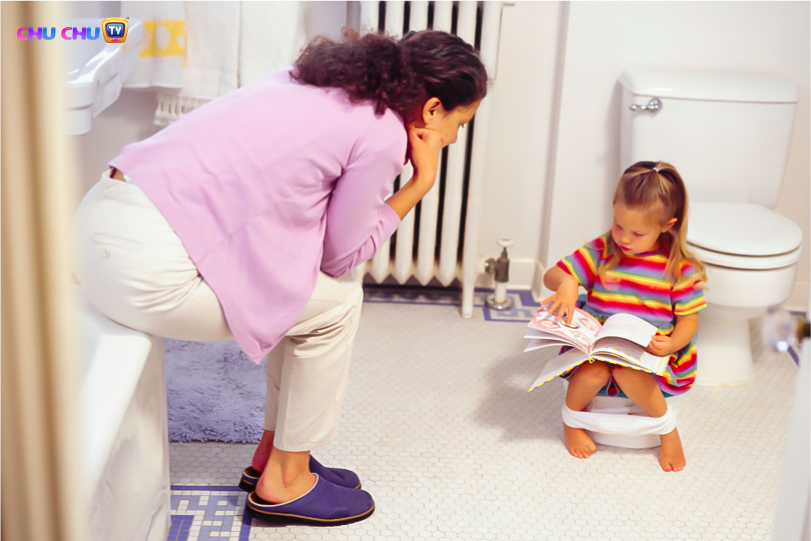
5. In case of success - very, very praise. In case of failure, we do our best not to be upset, and if we are upset, we do not show grief.
6. We fix attention not only on the potty itself, but also on the actions immediately preceding communication with the potty and parting with it: how to get the potty, how to open it, how to take off the panties, how to put on the panties, how and where to pour the contents from the pot how to wash the pot, how to close the pot and put it back in its place. The implementation of all of the above easily turns into an interesting game. It is wonderful if, after each successful action, parents do not skimp on praise - the whole process in this case is accompanied by positive emotions, and this is perhaps the main thing at the transitional stage.
7. Gradually we organize meetings with the potty not only when it is time for the child, but when the daily routine requires it. For example, without fail we sit down before going to bed, before a walk.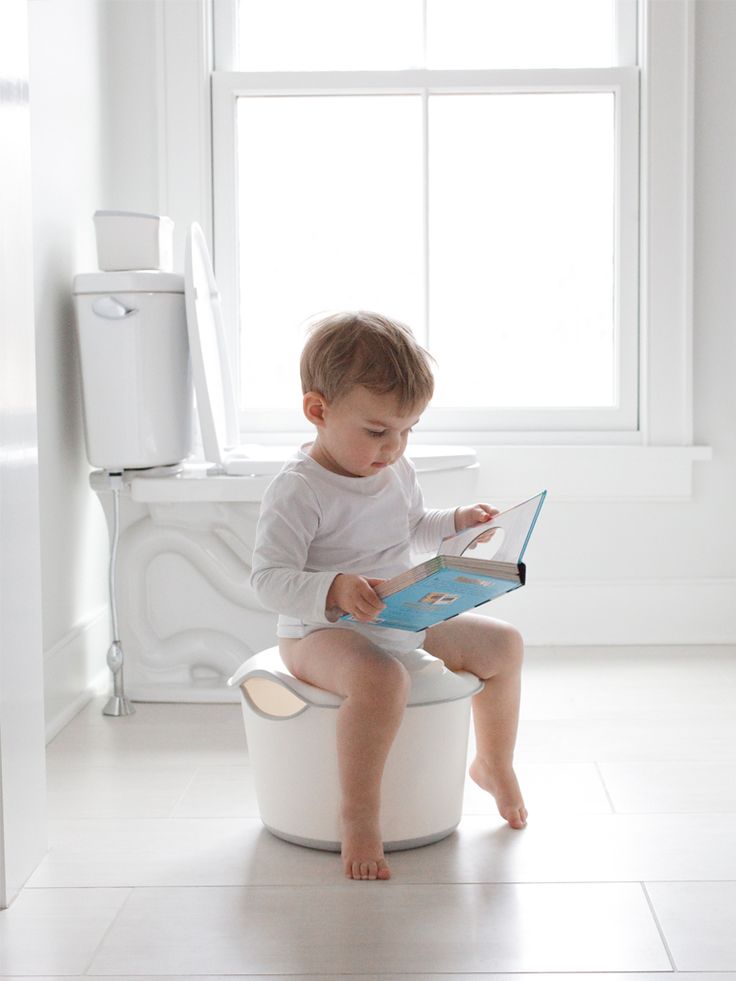
8. You shouldn't part with diapers completely and irrevocably. They are quite useful for traveling in transport, at night, for a walk in the cool season, at first and during daytime sleep. But every time when we woke up dry and quickly sat down on the potty, we pay attention to what good fellows we are, and in confirmation of this obvious fact, we demonstrate a dry diaper.
9. It is important that the pot is not perceived as a toy, but as an object of a very specific purpose. And in this regard, you should not encourage just playing with the potty. “This is a chair. They sit on it" - and, by analogy, - "This is a pot, they pee and poop on it."
10. It doesn't matter: a potty or a toilet (assuming a special child seat). Here's how you feel more comfortable. Considering that, especially at first, the process can be delayed, the potty is more convenient, since it is more pleasant to communicate in a room than in a cramped toilet space. Combining a potty with a toilet is a perfectly acceptable option, especially for boys.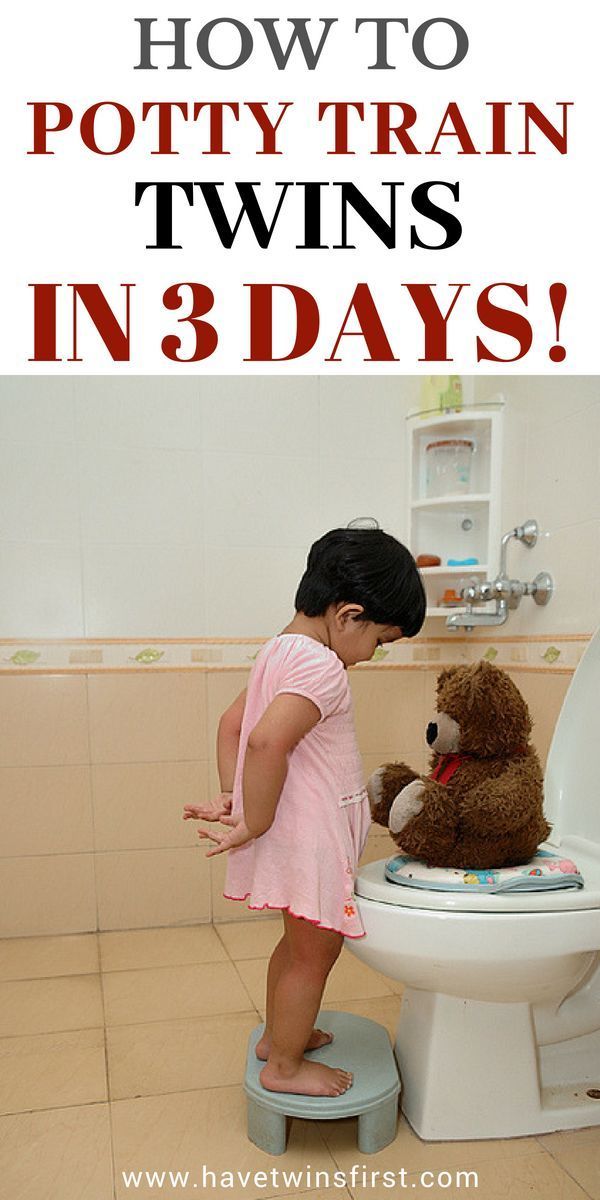 A special stool in the toilet, and peeing from it is just a pleasure and a conscious introduction to the world of adults. And if dad finds time to show how it's done...
A special stool in the toilet, and peeing from it is just a pleasure and a conscious introduction to the world of adults. And if dad finds time to show how it's done...
Up
“Baby refuses potty. How to be?
“We are already one year old. Our Anyuta can sit on the potty for a very long time, play, look at books, but she does not do what is necessary. How can we be? Maria
Don't worry about it. Your daughter is still too young to be potty trained. It is possible to start accustoming a child only when his body is physiologically ready for this - that is, approximately at the age of 18 months. Only by this age does his nervous system form and he begins to realize that he wants to go to the toilet. And now, when your daughter is 1 year old and she is starting to walk, it is very important to help her develop balance and strengthen her back muscles - exercises on a gymnastic ball would be very suitable for this (swaying a baby lying down).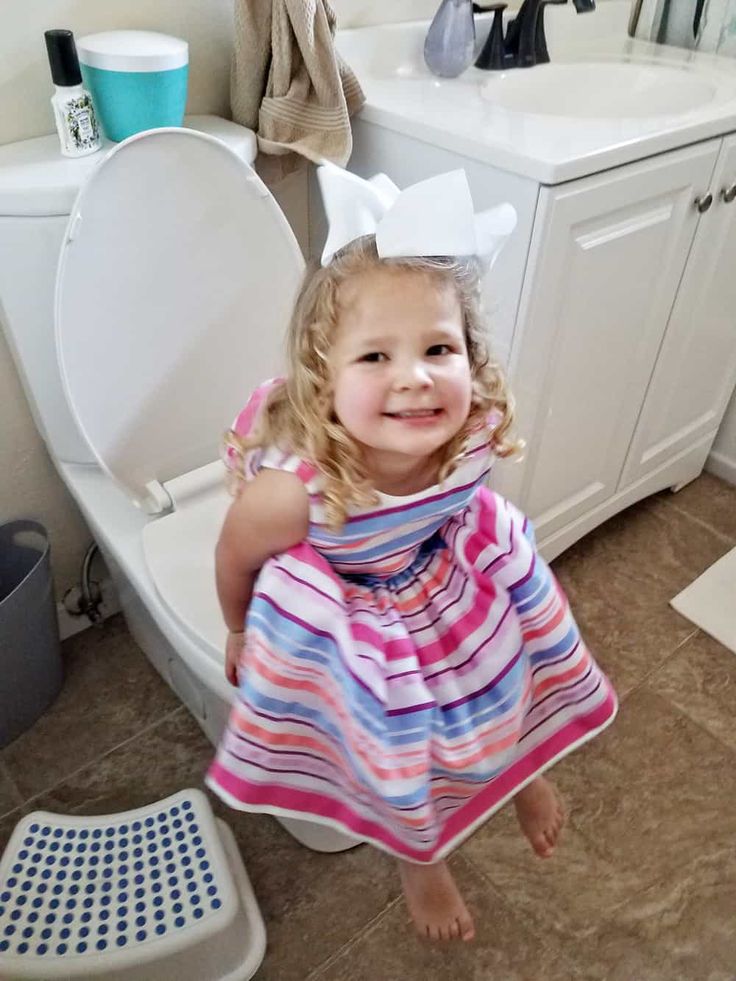 0005
0005
back or belly on a ball) or stepping over obstacles (over toys on the floor).
“We started potty training our baby about 3 weeks ago, he seemed to understand everything right away and did everything right, and then he began to refuse, and now he doesn’t even want to come close to him. We are 1.5 years old. Irina
This happens often, and there is nothing to worry about. Try to remember, after which the child began to refuse the potty. Maybe something scared him, or the pot was cold. Pay attention to the situation in the family, think about what has changed in the life of the baby and is he experiencing stress? And if you understand the reason, try to eliminate it. Never force him to sit on the potty. It is best to suspend the learning process for a few weeks and surround the child with attention and affection. Usually, after such a respite, children are ready to reacquaint themselves with the potty.
“Our Katyusha, at 1 year and 7 months old, does not use the potty.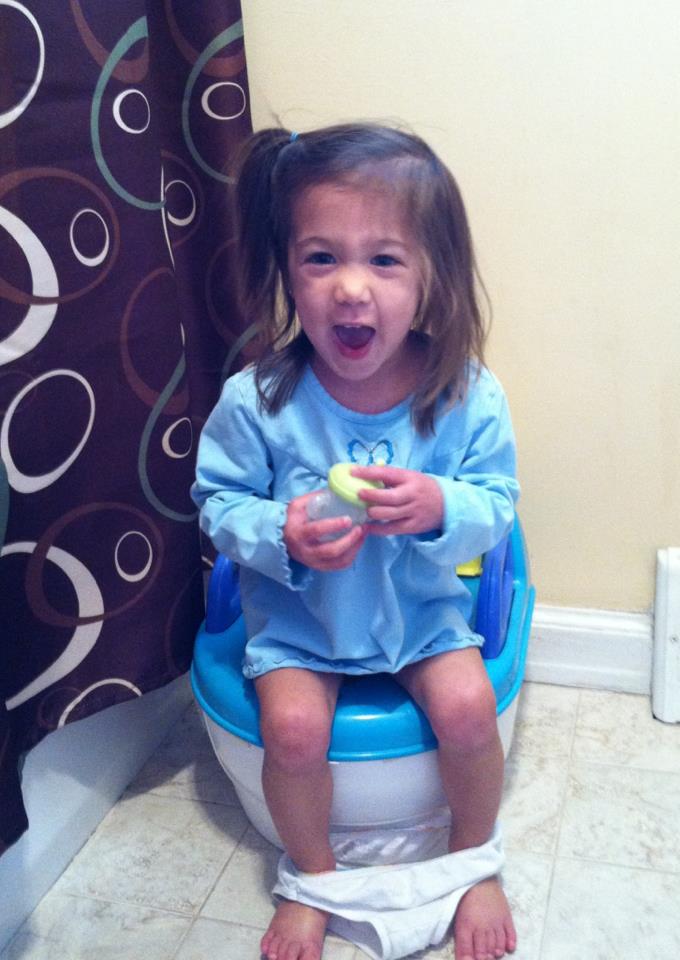 But she is very interested in everything that happens in the bathroom. When one of us goes there, every time she tries to break in and see what we are doing there. Is this normal? Daria
But she is very interested in everything that happens in the bathroom. When one of us goes there, every time she tries to break in and see what we are doing there. Is this normal? Daria
Don't worry! This is absolutely normal, moreover, this interest of your daughter indicates her readiness for potty training. If she is now ignoring the learning process, take a close look at my rules for successful potty training and make sure
You are doing everything right. And if a mistake was made somewhere and the pot now causes negative emotions in the child, stop and start learning again. Take advantage of her curiosity about adult behavior. It is known that kids are very fond of imitating adults. Buy your daughter a baby toilet seat and show her how to use the toilet. After that, most likely she herself will want to act like an adult and do the same.
Up
6 most common misconceptions
1. “It seems to me that the sooner I start teaching the baby to use the potty, the sooner he will learn to do it. Is it so?"
Is it so?"
You, like all parents, want only the best for your child and try to develop all his abilities as early as possible. But in such a matter as potty training, you should not rush. The earlier you start, the longer and more difficult this process will be for the child. After all, he will be able to control his bladder and intestines only when his body is sufficiently developed - an average of 18 months. And if you start learning at the right age, then the child will learn much faster and easier and will be able to be proud of his achievement. And you will be proud of it!
2. “Is it true that if a baby wears disposable diapers all the time in which he does not feel that he is wet, then it is more difficult to teach him to use the potty?”
No matter what diapers your baby wears, or if he wears them at all, he will learn to use the potty when his body is ready. In support of this, there are the results of studies that compared the behavior of two groups of children - in the first group, babies wore traditional gauze diapers from birth, and in the second - disposable diapers.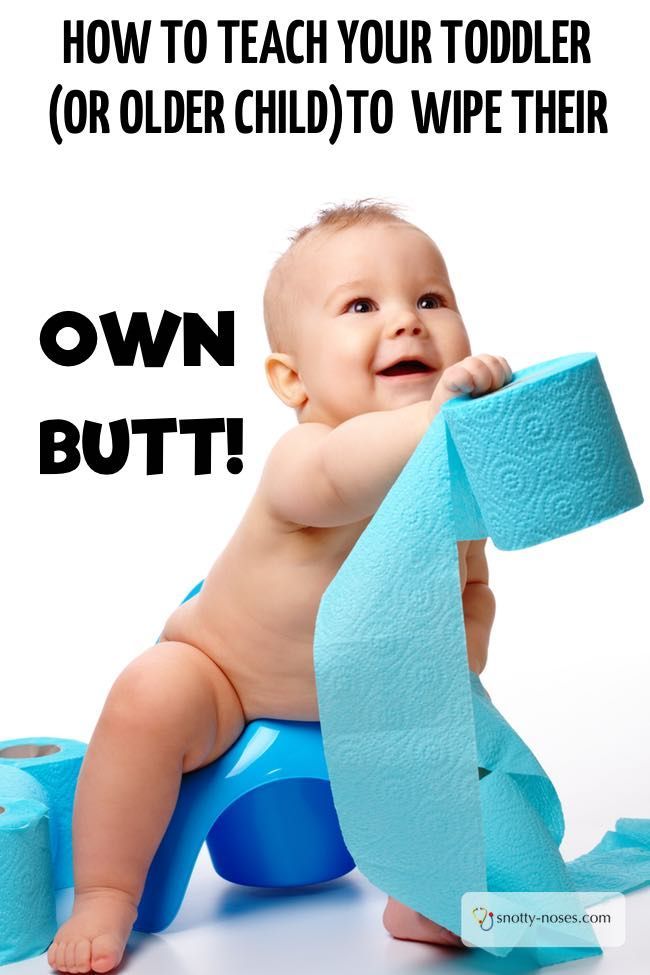 In both groups, the age at which the babies stopped completely needing diapers was exactly the same - an average of 27 months (E. Takanashi, 1988, Japan). Therefore, it is safe to say that the use of disposable dry surface diapers does not affect the ability of babies to learn to use the potty and the age when they can do it.
In both groups, the age at which the babies stopped completely needing diapers was exactly the same - an average of 27 months (E. Takanashi, 1988, Japan). Therefore, it is safe to say that the use of disposable dry surface diapers does not affect the ability of babies to learn to use the potty and the age when they can do it.
3. "I'm afraid to wear diapers on my 3-month-old son, because I heard that they can lead to infertility due to the greenhouse effect"
First, the reproductive system in boys begins to develop only at the age of 7-9 years. At the age of 7, spermatozoa precursor cells appear, and the spermatozoa themselves can be detected not earlier than at 10 years old, but as a rule, much later. From this it is clear that diapers cannot affect the quality of sperm in any way - boys at this age do not have it in principle. There are also a number of studies that confirm that disposable diapers do not create a greenhouse effect - the temperature under the diaper is practically the same as the skin temperature in ordinary diapers, and the humidity level under the diaper is much lower than when using diapers. Therefore, to sum up: disposable diapers and boys are compatible.
Therefore, to sum up: disposable diapers and boys are compatible.
4. “My daughter is 1 year old. I know it’s too early to potty train her, but I’m very worried that we won’t have time to learn before kindergarten.”
No matter what age you start potty training your child, there is no guarantee that she will learn to do it before kindergarten. After all, all children are potty trained at about the same time. Therefore, if you start teaching at an early age, this will not help speed up the process, but on the contrary, the training will be delayed - the child will not understand what they want from him, she will be upset because of this, and you too. And if you start when the child's body is ready for this, then you and your baby will achieve success much faster and easier, and the child will already understand that this is his achievement and will be proud of it.
5. “Many of my friends in the yard say that their babies go to the potty at the age of 9, 8, and even at 6 months. My daughter is 1 year old, I tried to teach her, but nothing comes of it. Maybe I'm doing something wrong? Why can't my child learn as quickly as other children?
My daughter is 1 year old, I tried to teach her, but nothing comes of it. Maybe I'm doing something wrong? Why can't my child learn as quickly as other children?
Tatyana, I understand that you, like all other parents, compare your child with other people's children and try to prove that yours is no worse. I want to reassure you - at such an early age, children are simply physically unable to consciously go to the potty. Their nervous system is not yet sufficiently developed to give signals about a full bladder or intestines. Until the age of 1.5, they go to the toilet without realizing it or noticing it. And you can not influence it in any way and accelerate the development of the child.
Your girlfriends most likely keep silent about the fact that their babies sit on the potty and listen to endless “pee-pee” and “ah-ah” for 30-40 minutes, and by this time the child’s even an empty bladder is full, and they pissing in a pot. And this leads to the development of a conditioned reflex to the mother's requests to pee or poop.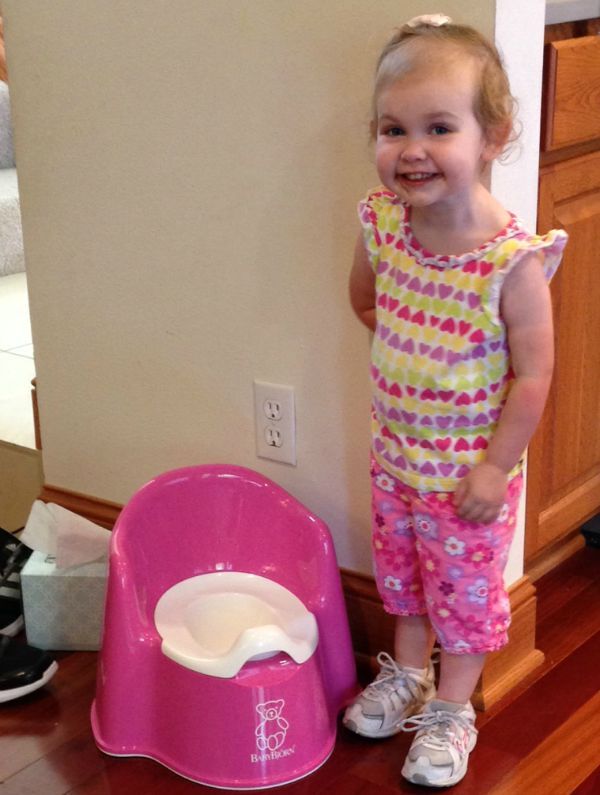 But in the second year of life, this reflex suddenly disappears for the parents. And only then the child begins to consciously learn to go to the potty.
But in the second year of life, this reflex suddenly disappears for the parents. And only then the child begins to consciously learn to go to the potty.
So remember, everything, especially potty stuff, has its time.
6. “My mother thinks that using diapers is better for our baby's health than diapers. Is it true?"
Such prejudices of the older generation towards diapers are due to the fact that earlier these hygiene products were simply not available. And today, grandmothers, who are often suspicious of everything new, find it difficult to appreciate the merits of diapers. Although, if we compare diapers with diapers, then the advantages of the first are obvious - the wet surface of the diapers causes irritation and skin diseases, and in cold weather, the duration of the baby's walks in diapers is significantly reduced. The Union of Pediatricians of Russia conducted clinical studies, and the results showed that the moisture content of the baby's skin in diapers is much lower than in diapers.